Dreaming of laho paratiisi project originated as a proposal for TUO TUO Art Residency’s open call for ecological land artworks inspired on the theme “World Tree” or “Tree of life”, a motif found in various cultures of the world throughout history.
Inspired by a tree’s parts and function, the artwork aims to visually represent the interconnectedness and symbiosis that happen in nature – aspects of life that can help us shape a sustainable culture. The artwork connects the tree of life, as a centerpiece, with some of the agents that nurture it through roots that extend all along the 2500 m2 field. A local tree and rock, a big owl, giant mushrooms, growing seedlings, and the visitors themselves play the part of the agents; while the tree and its leaves, made of bioplastics, represent the result of collaboration.
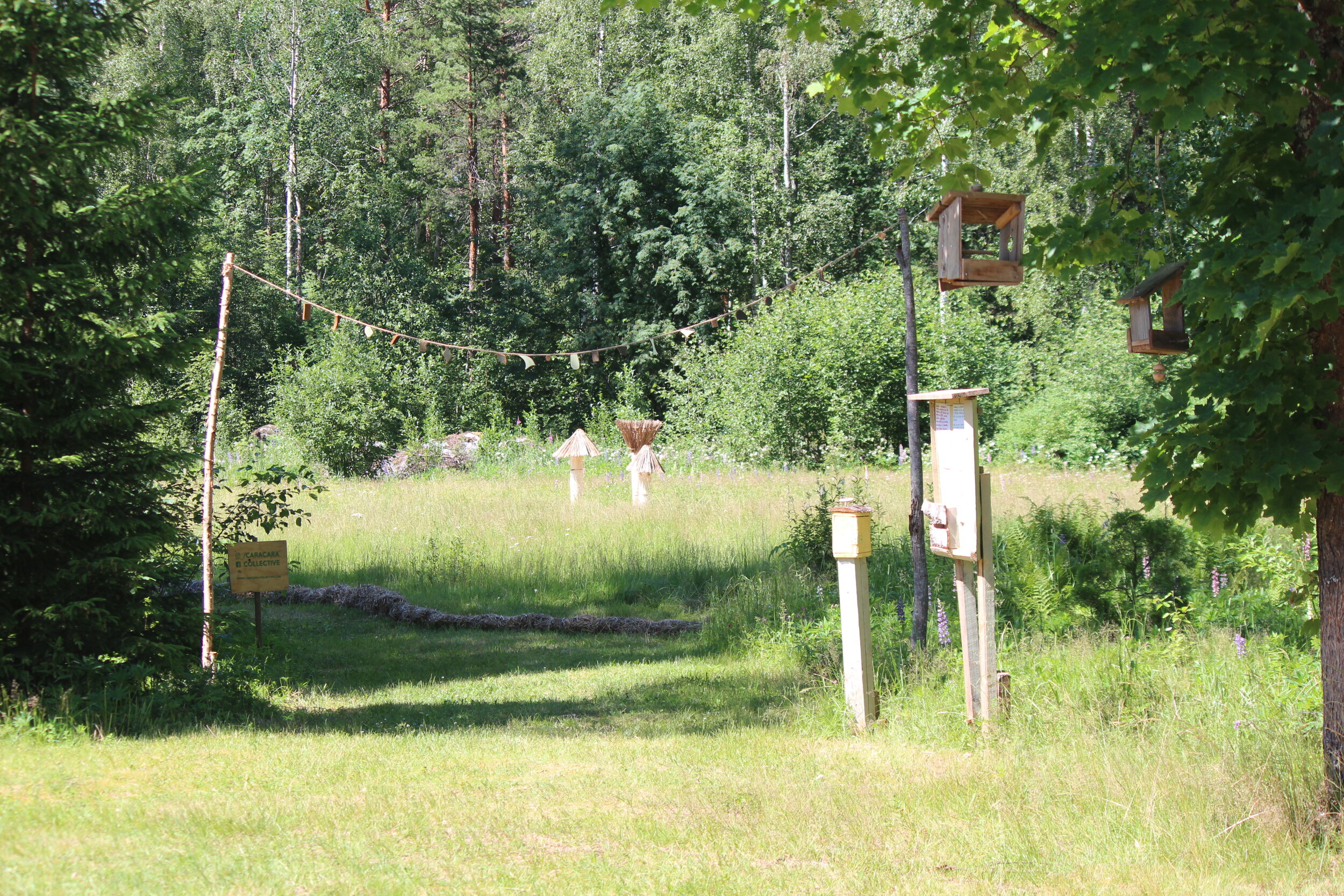
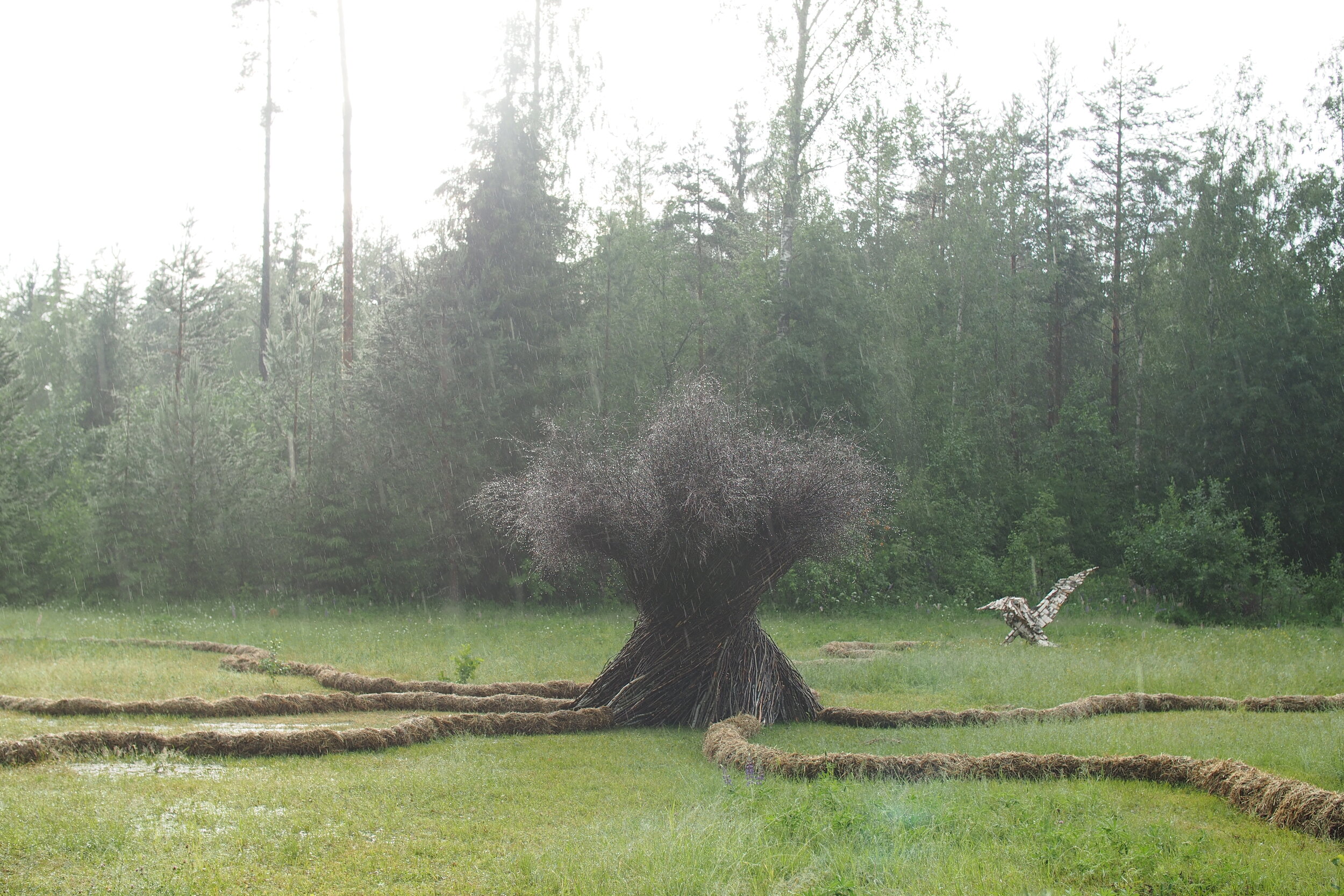

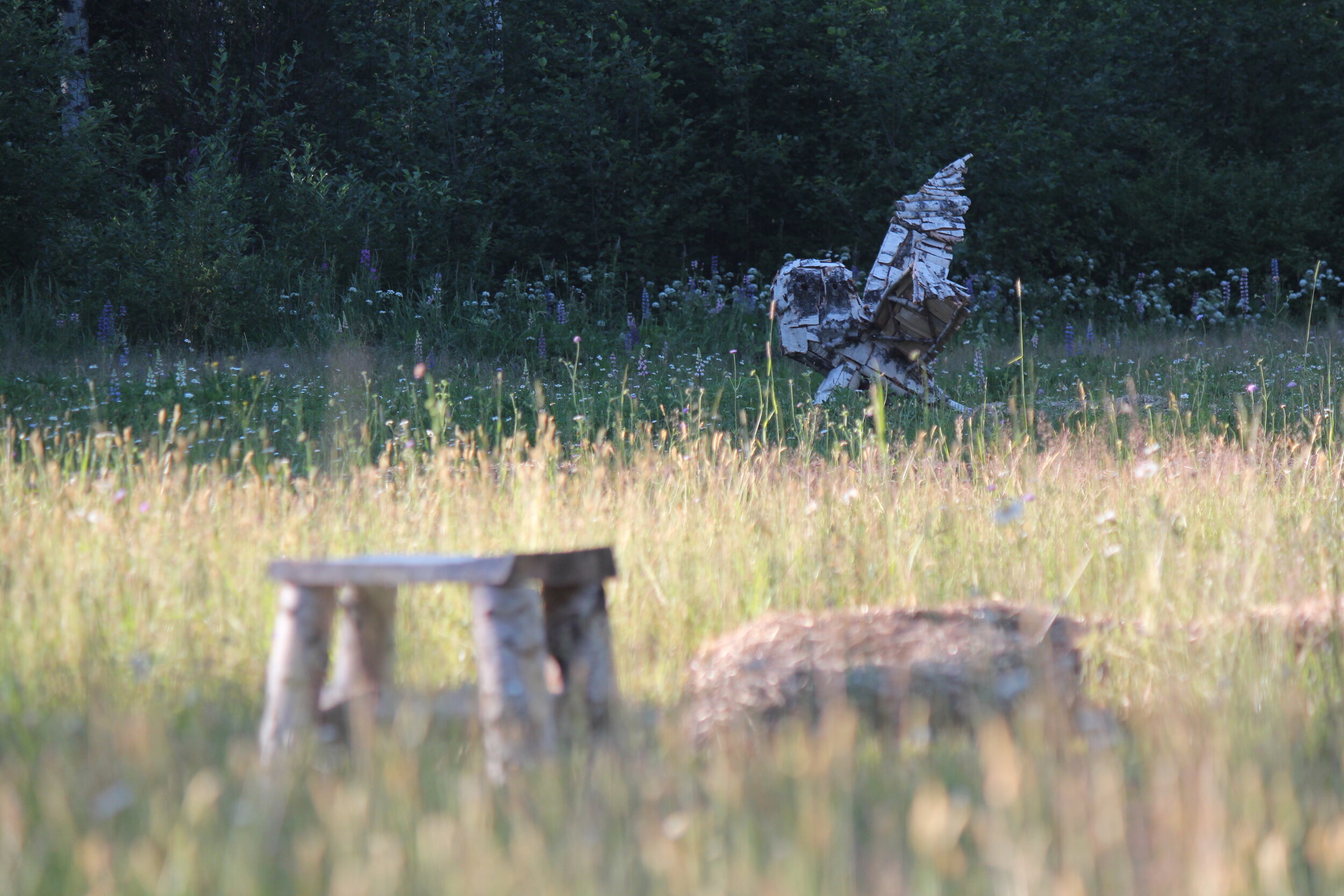
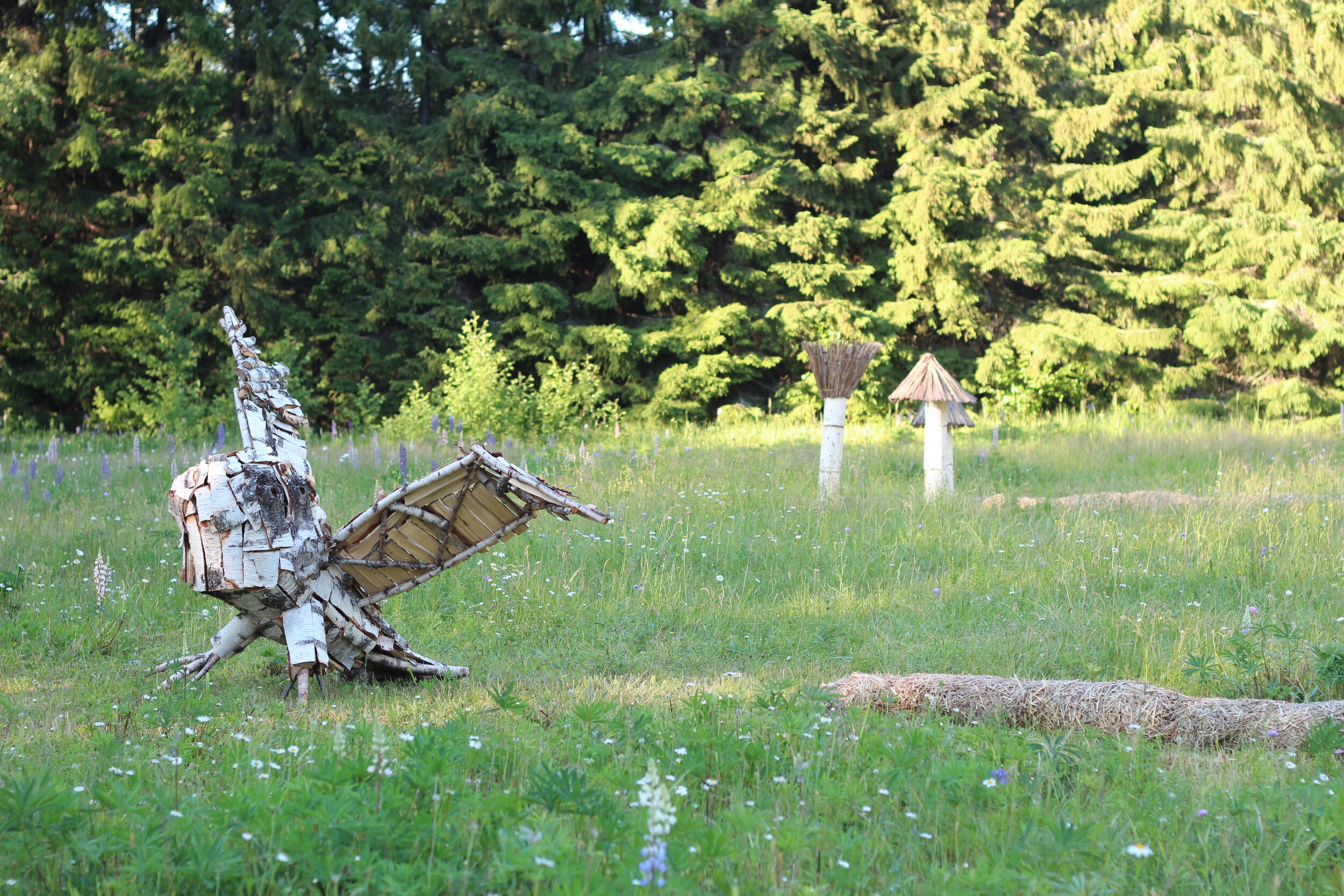
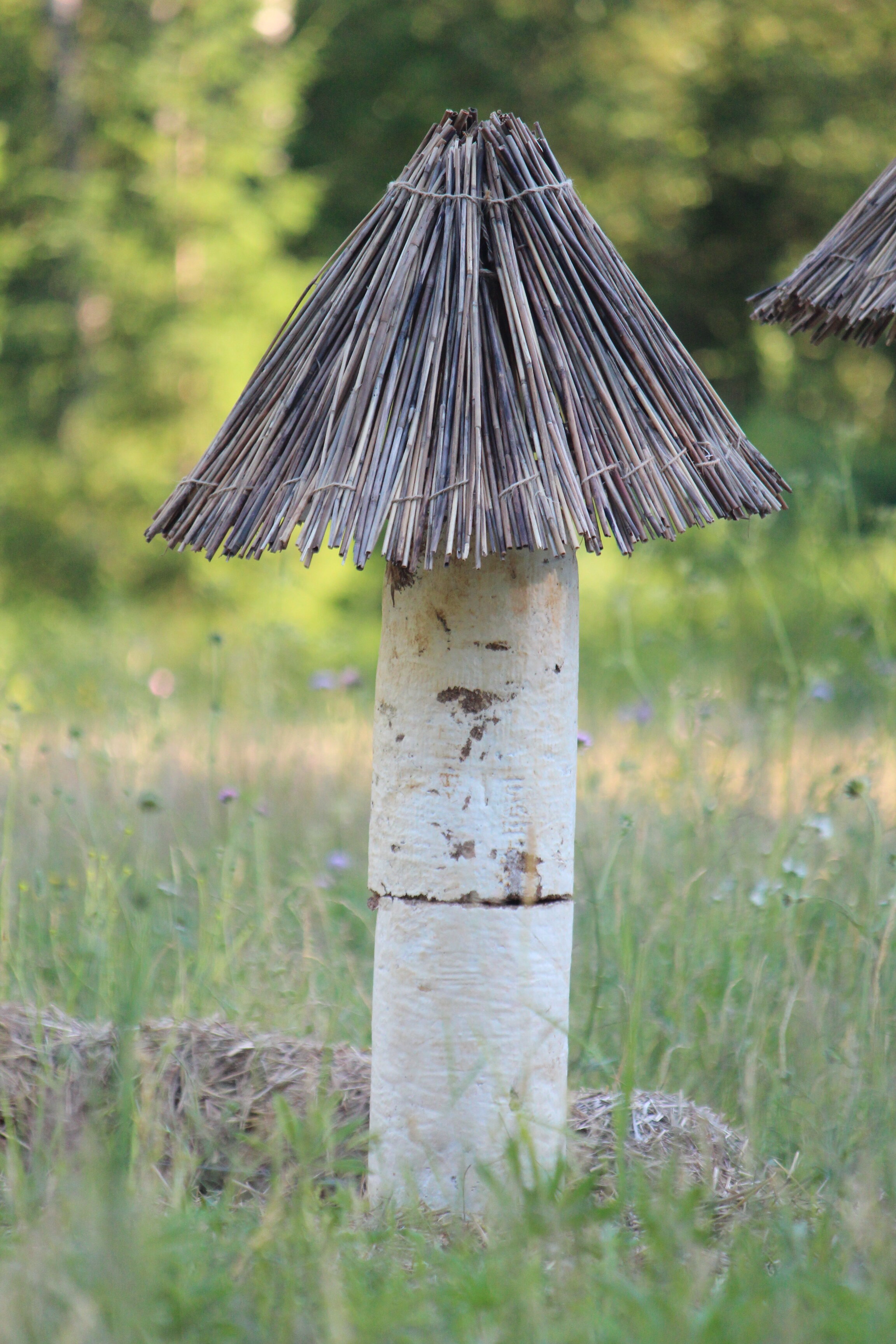
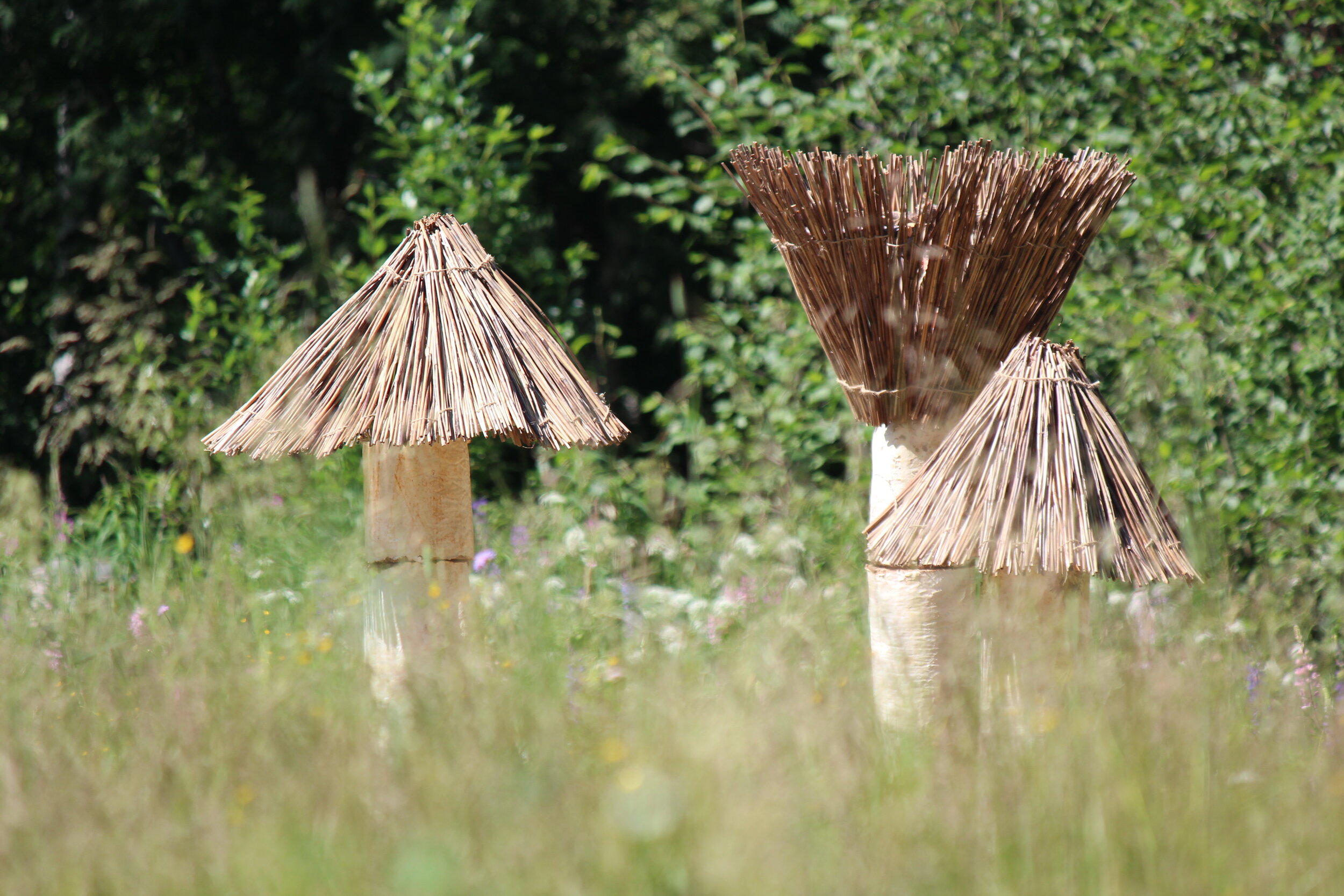
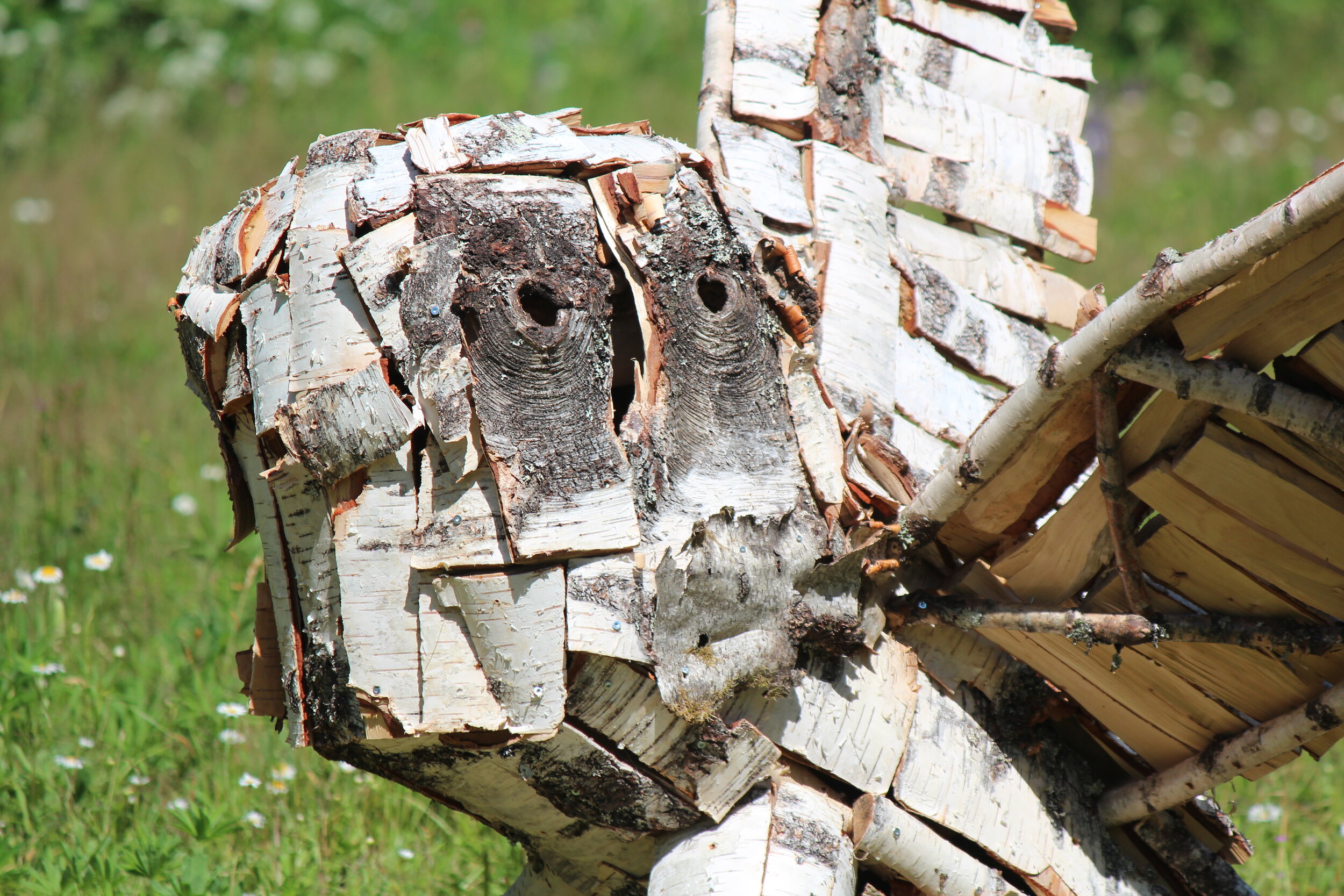
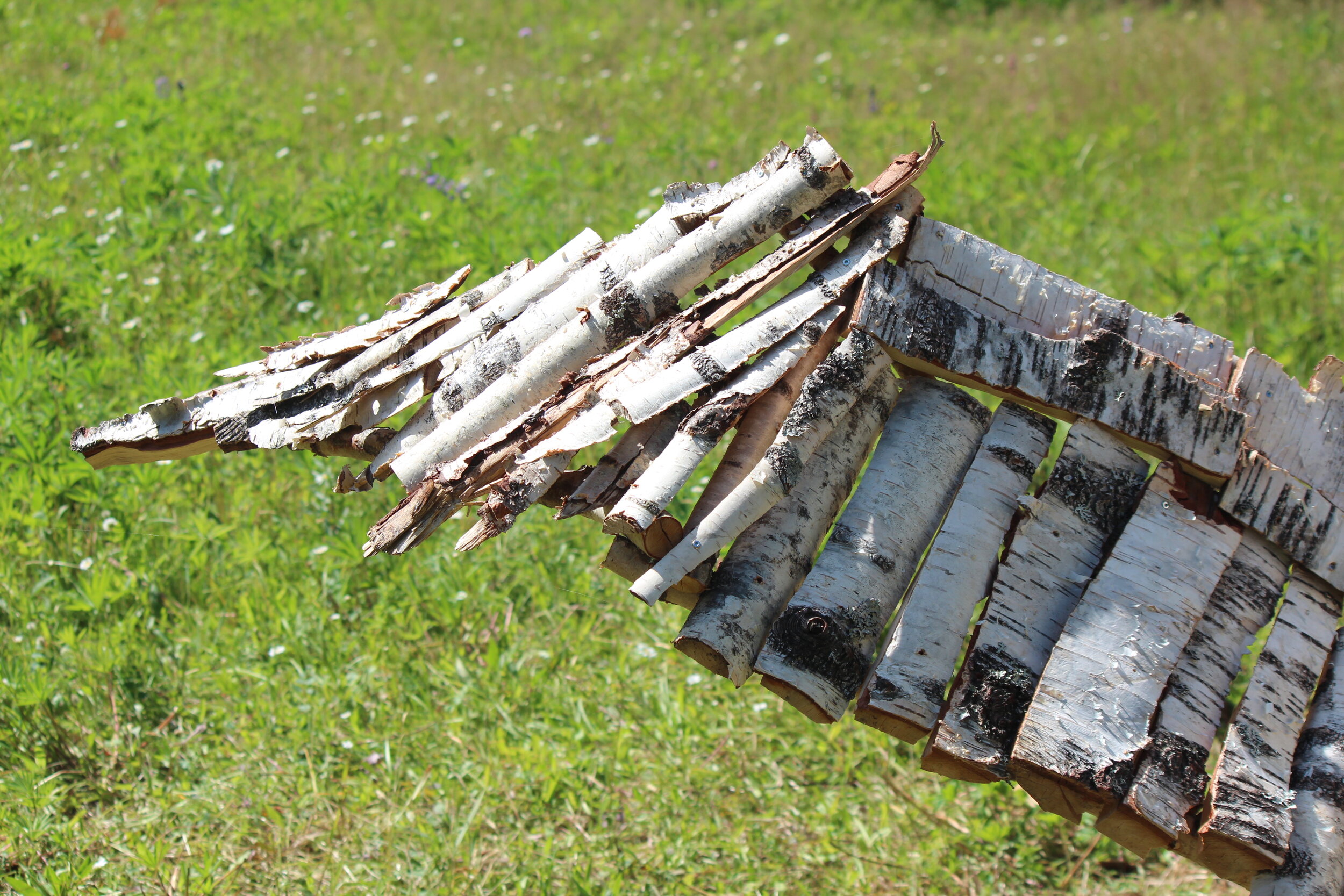
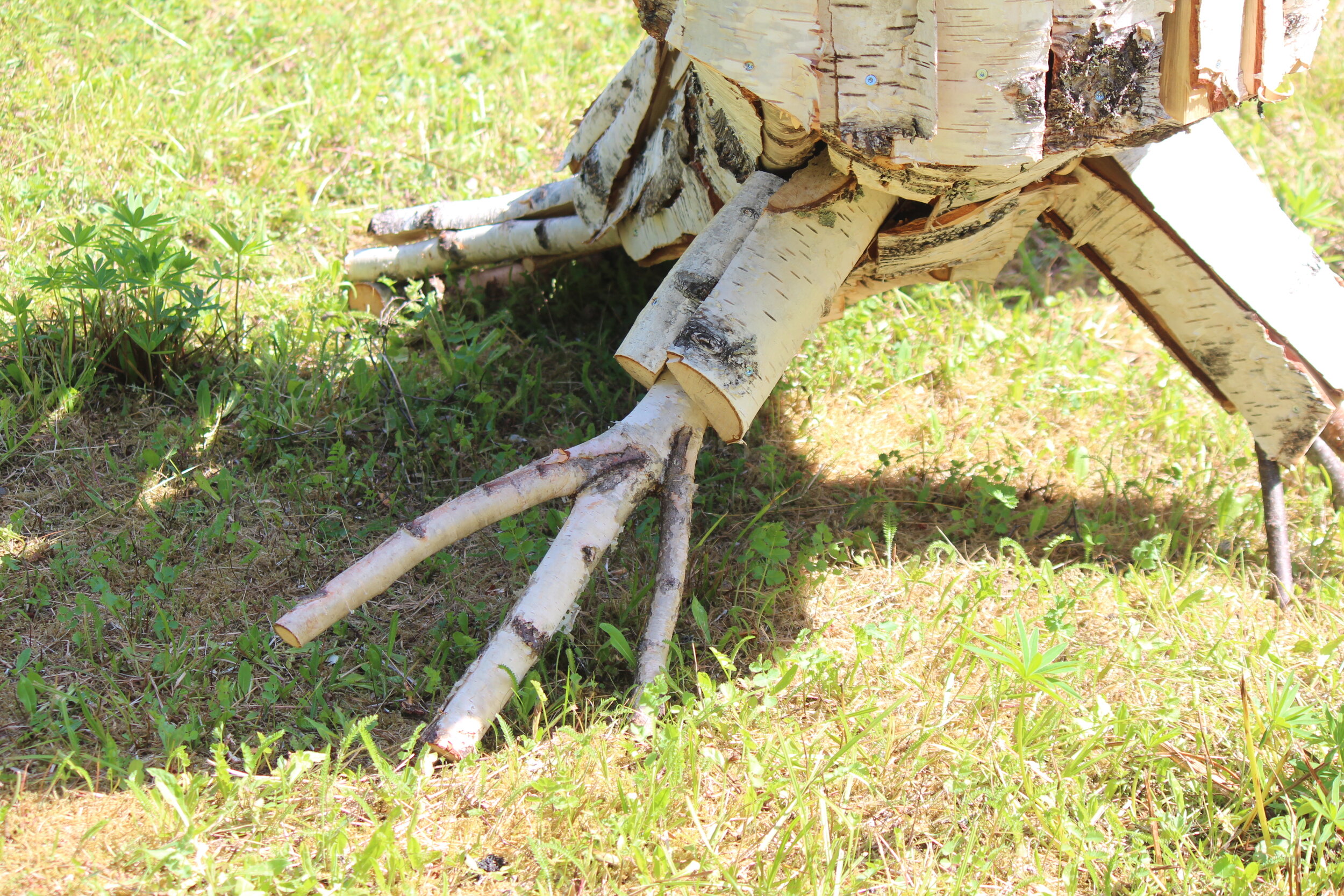

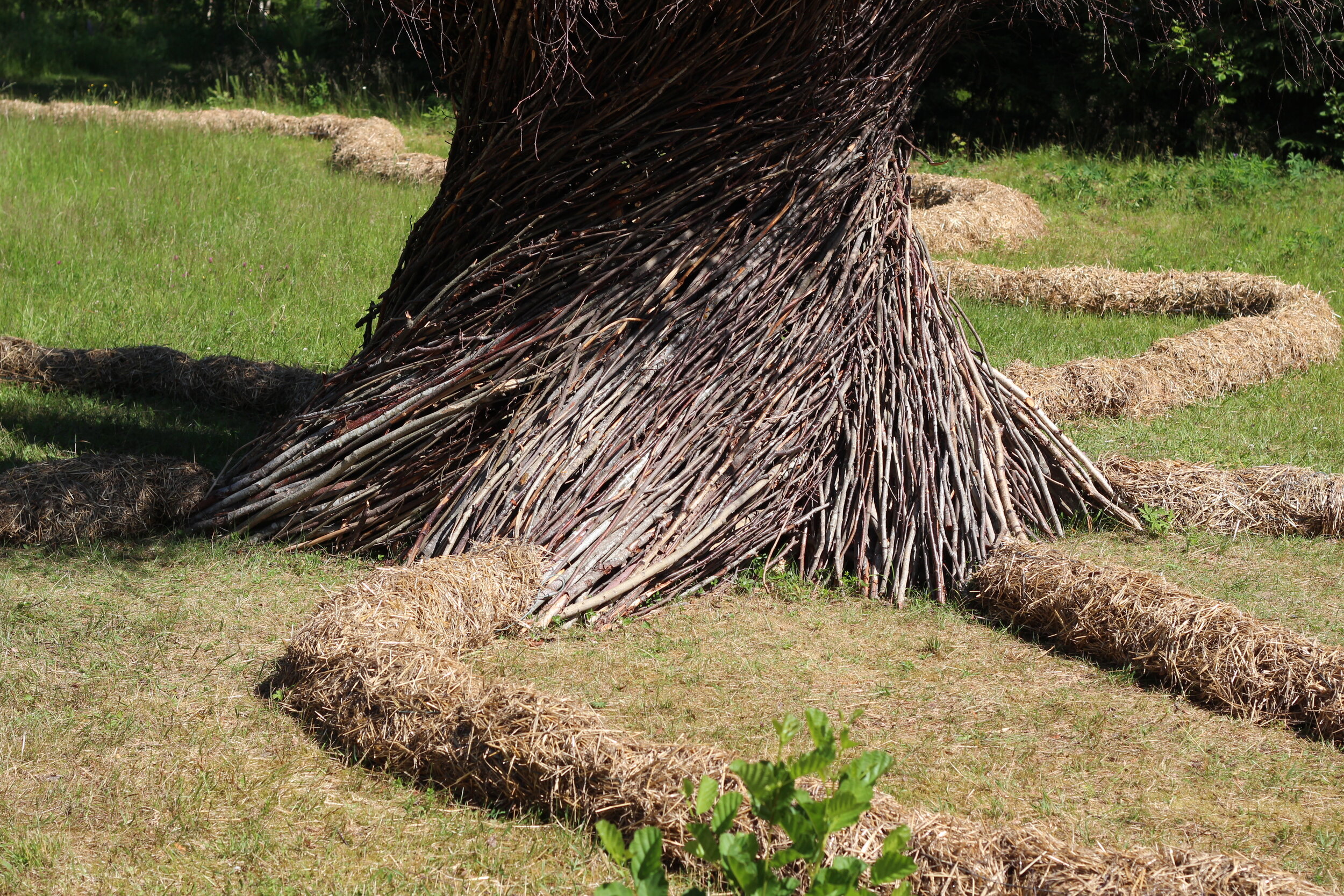

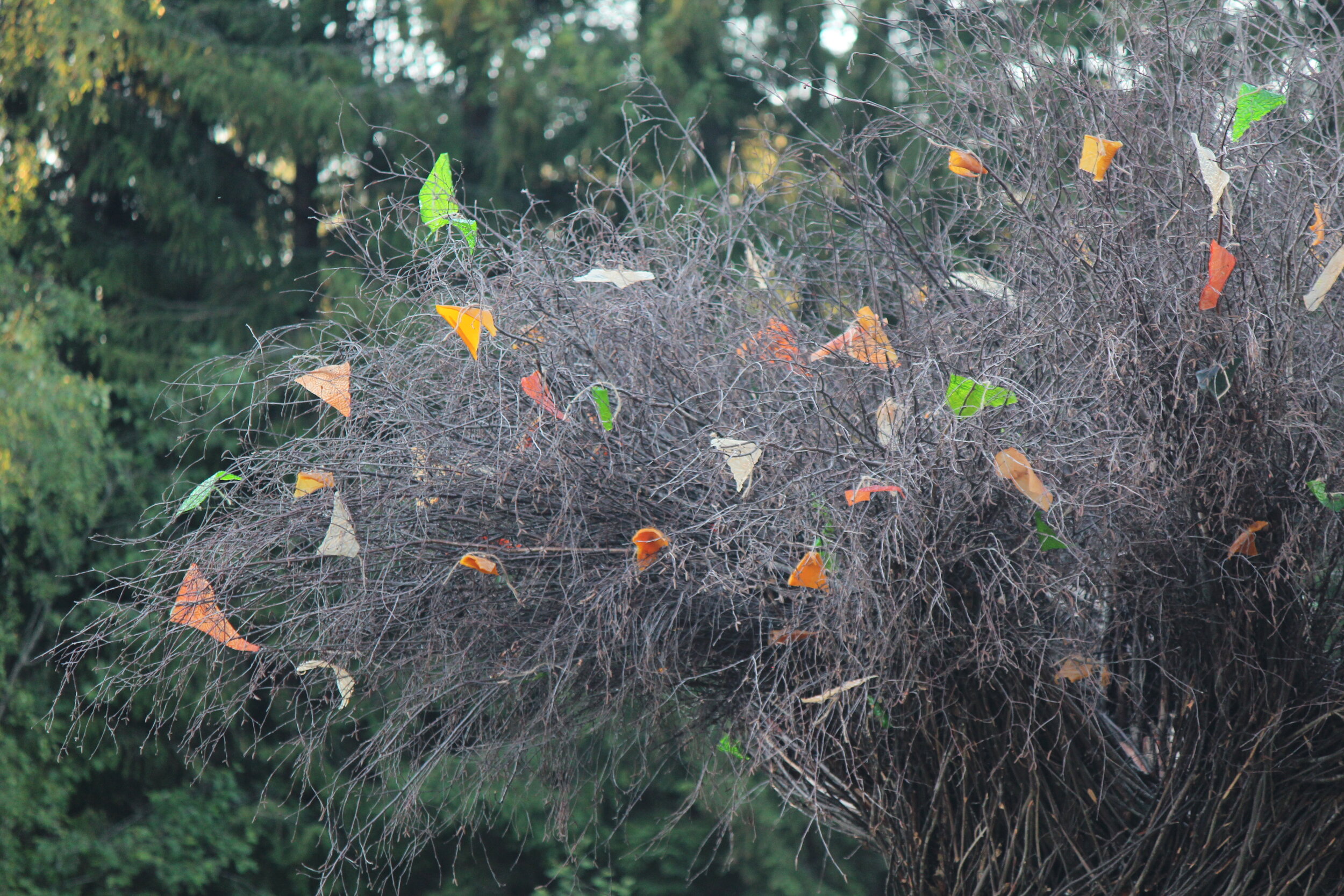

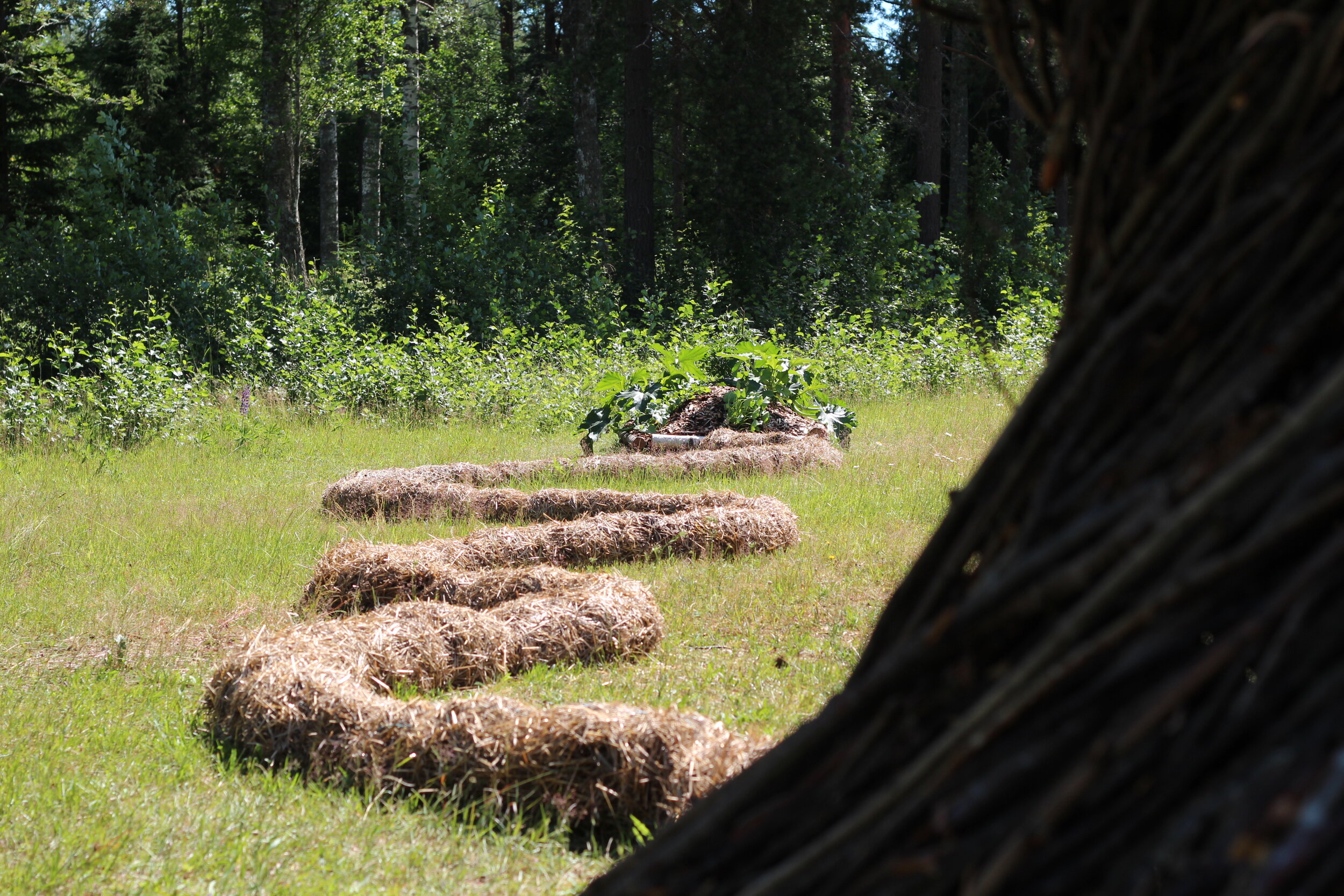
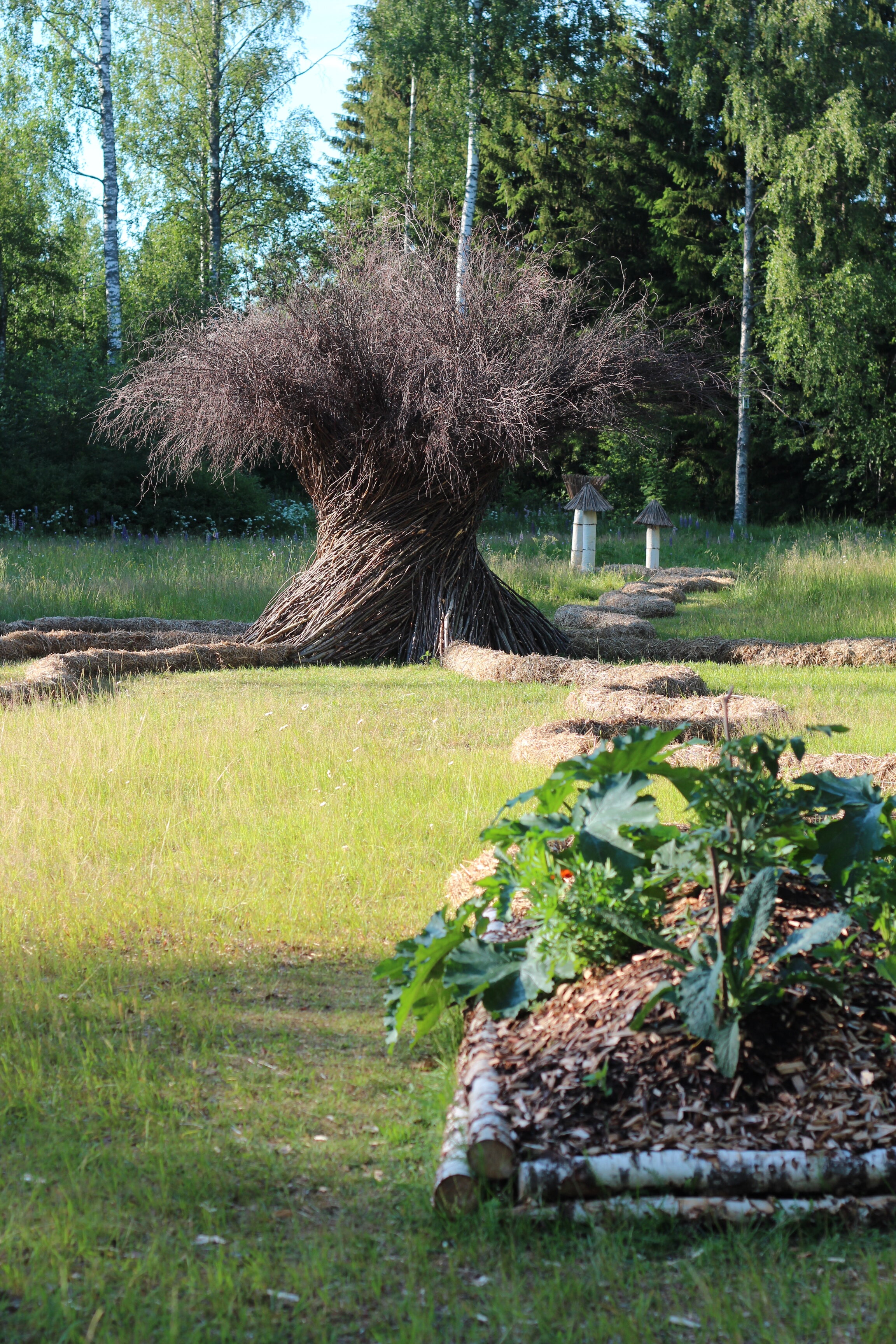


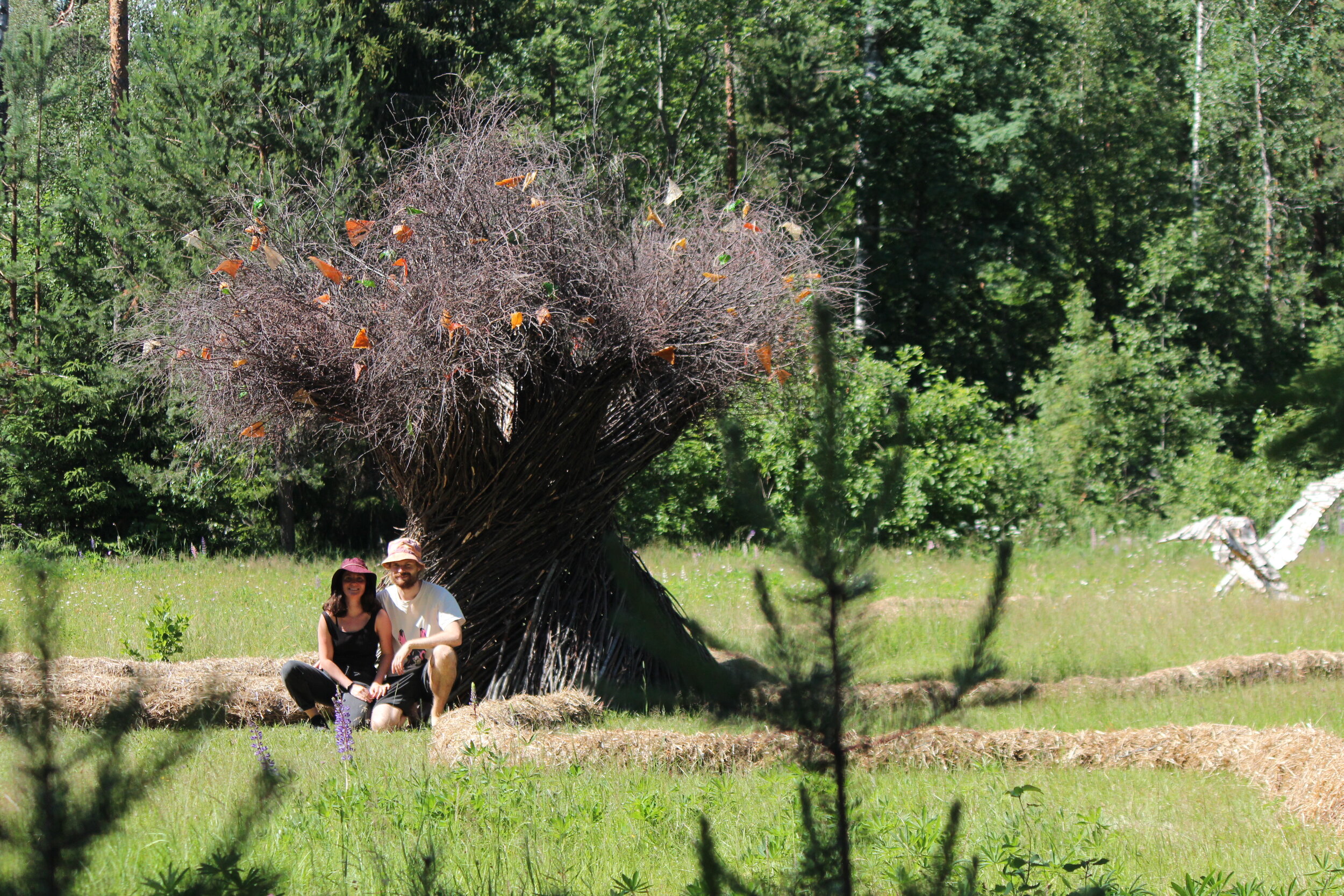
The next pictures show how the garden evolved over the summer and how new growths started to appear.
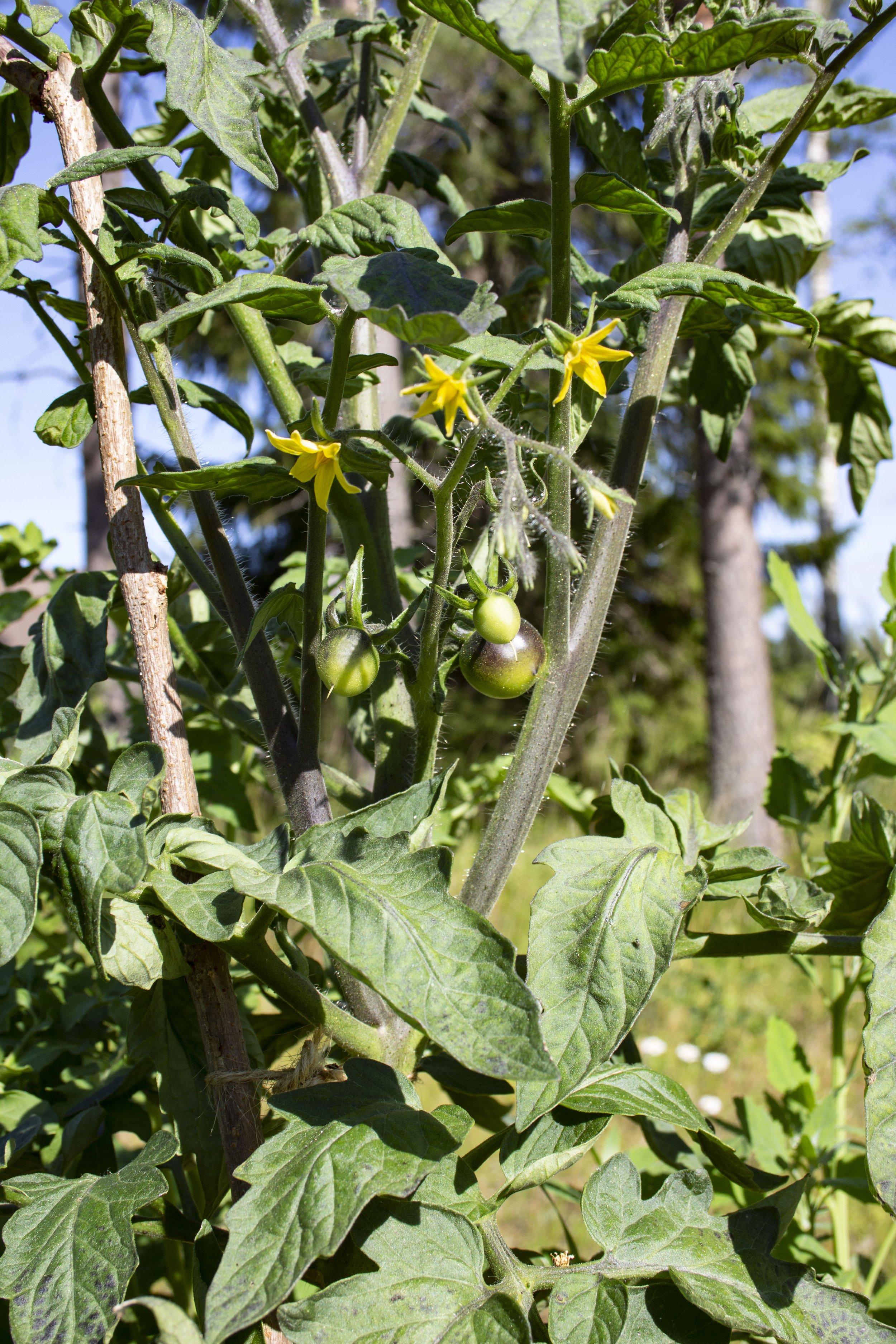

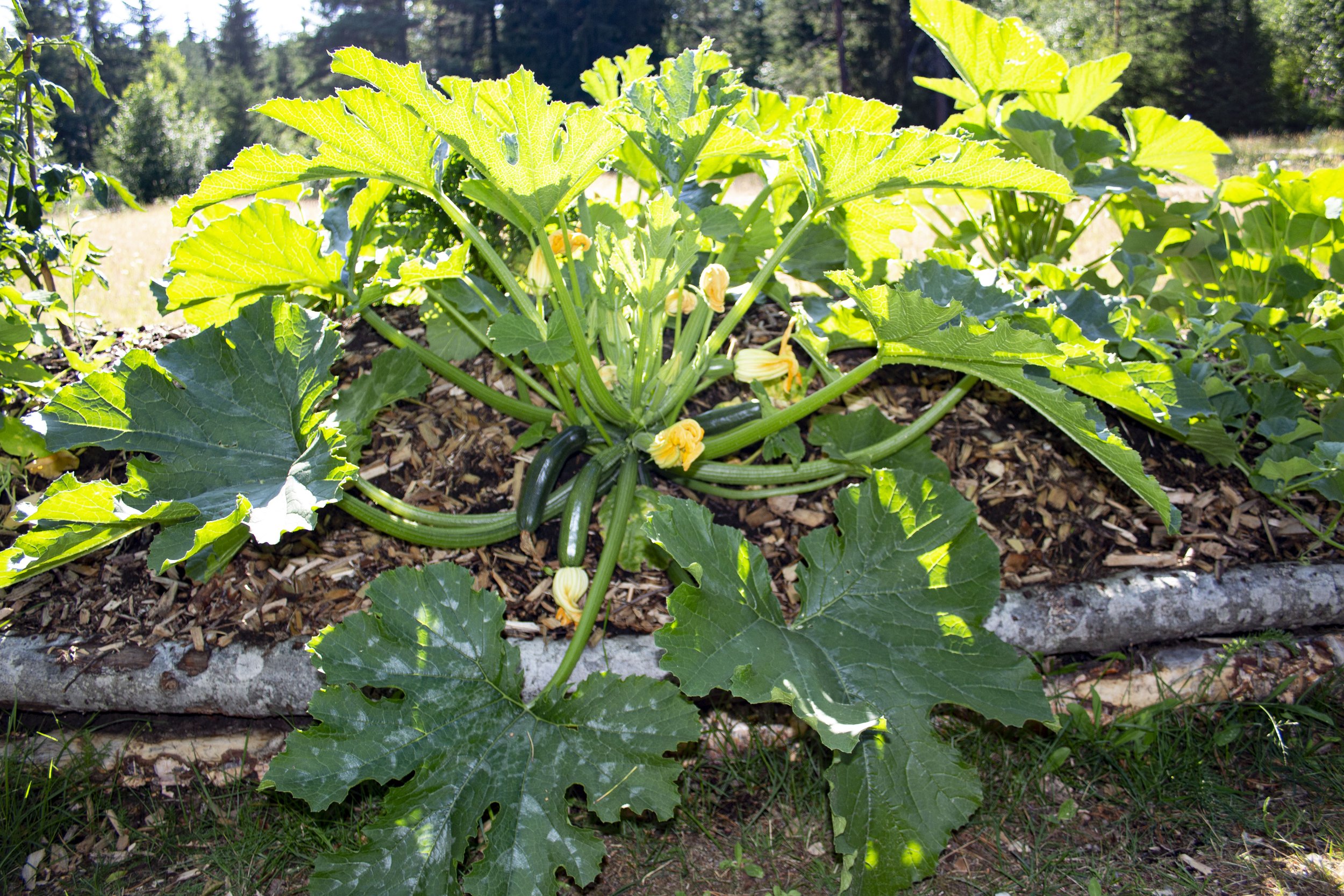

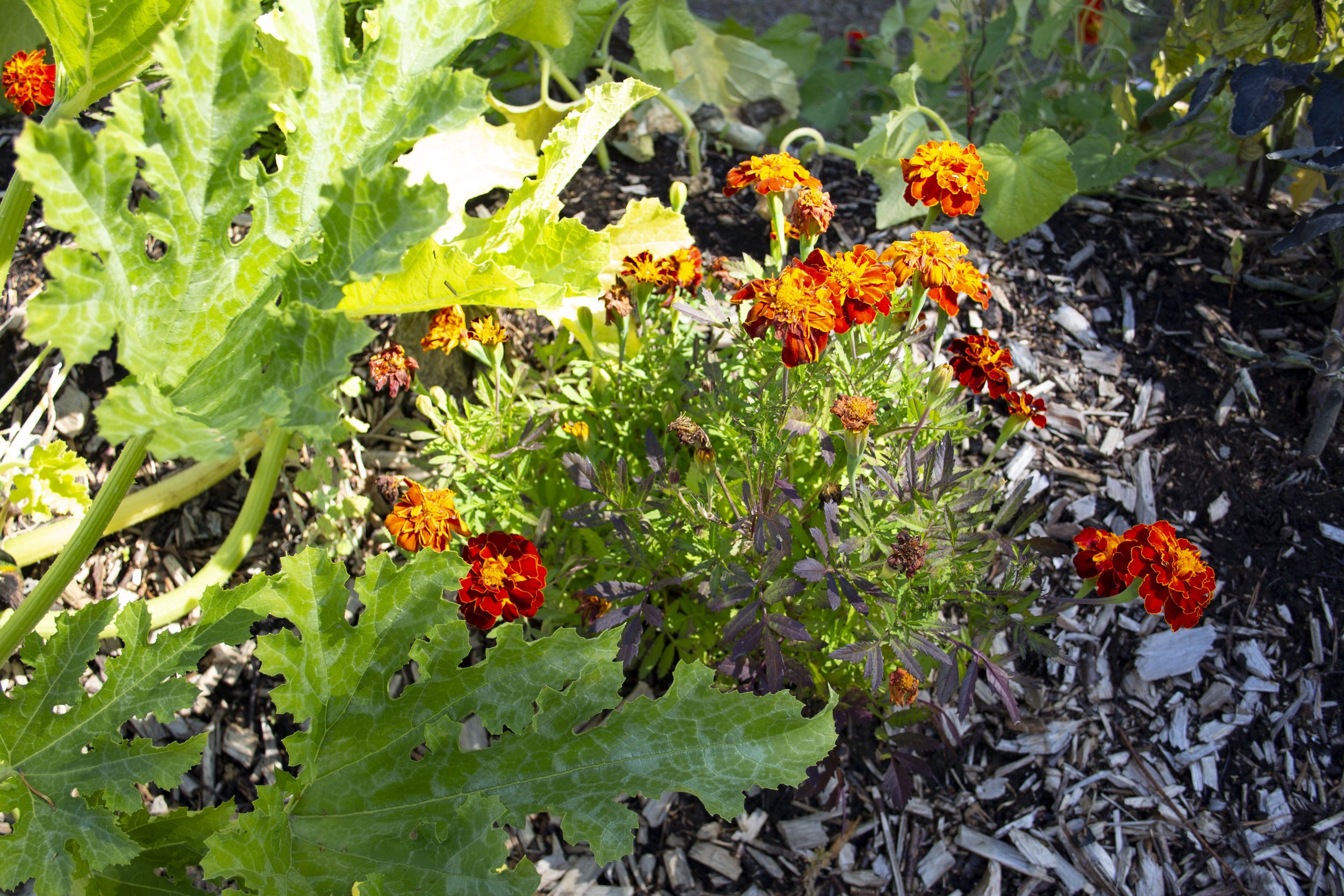

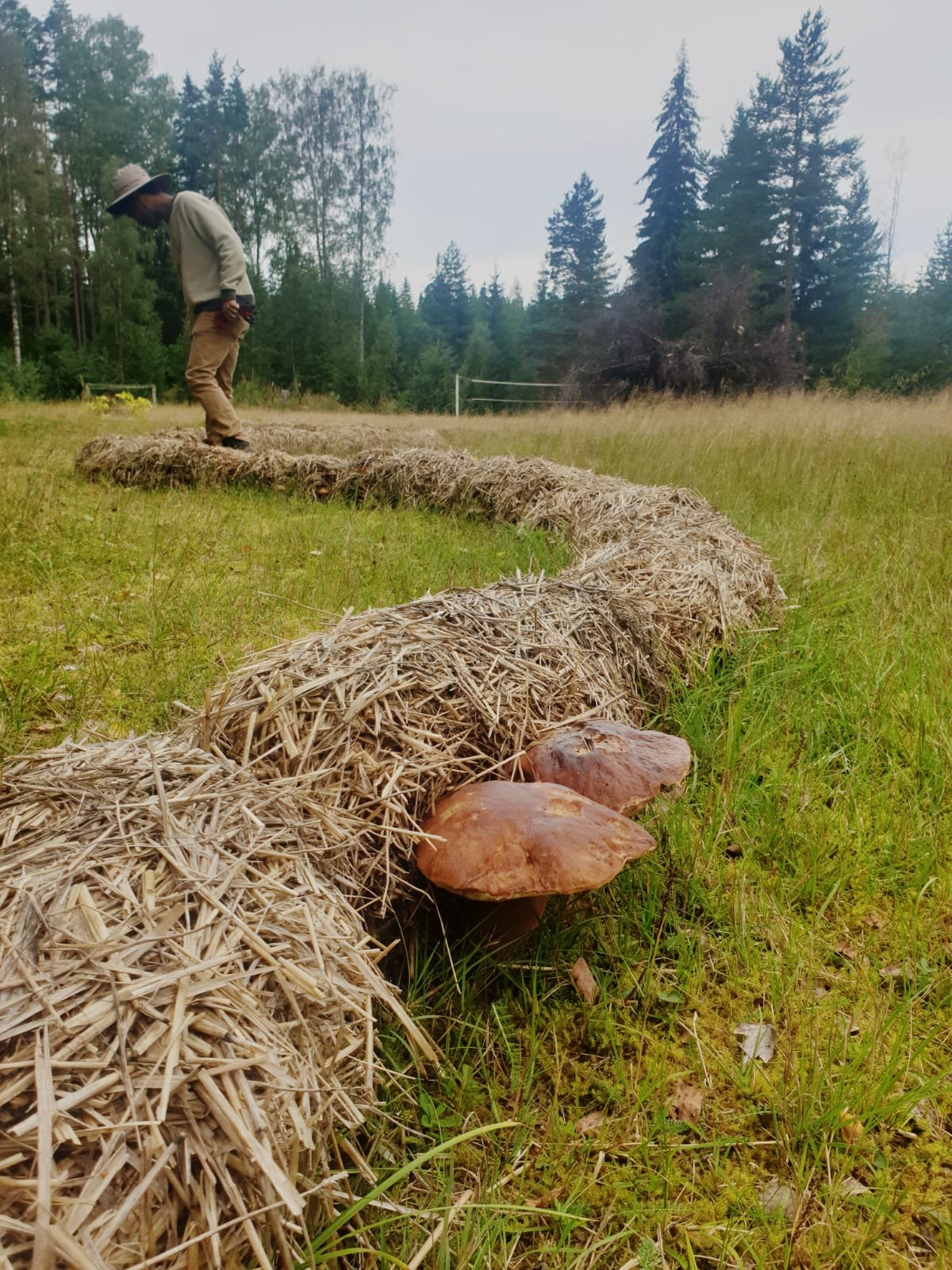

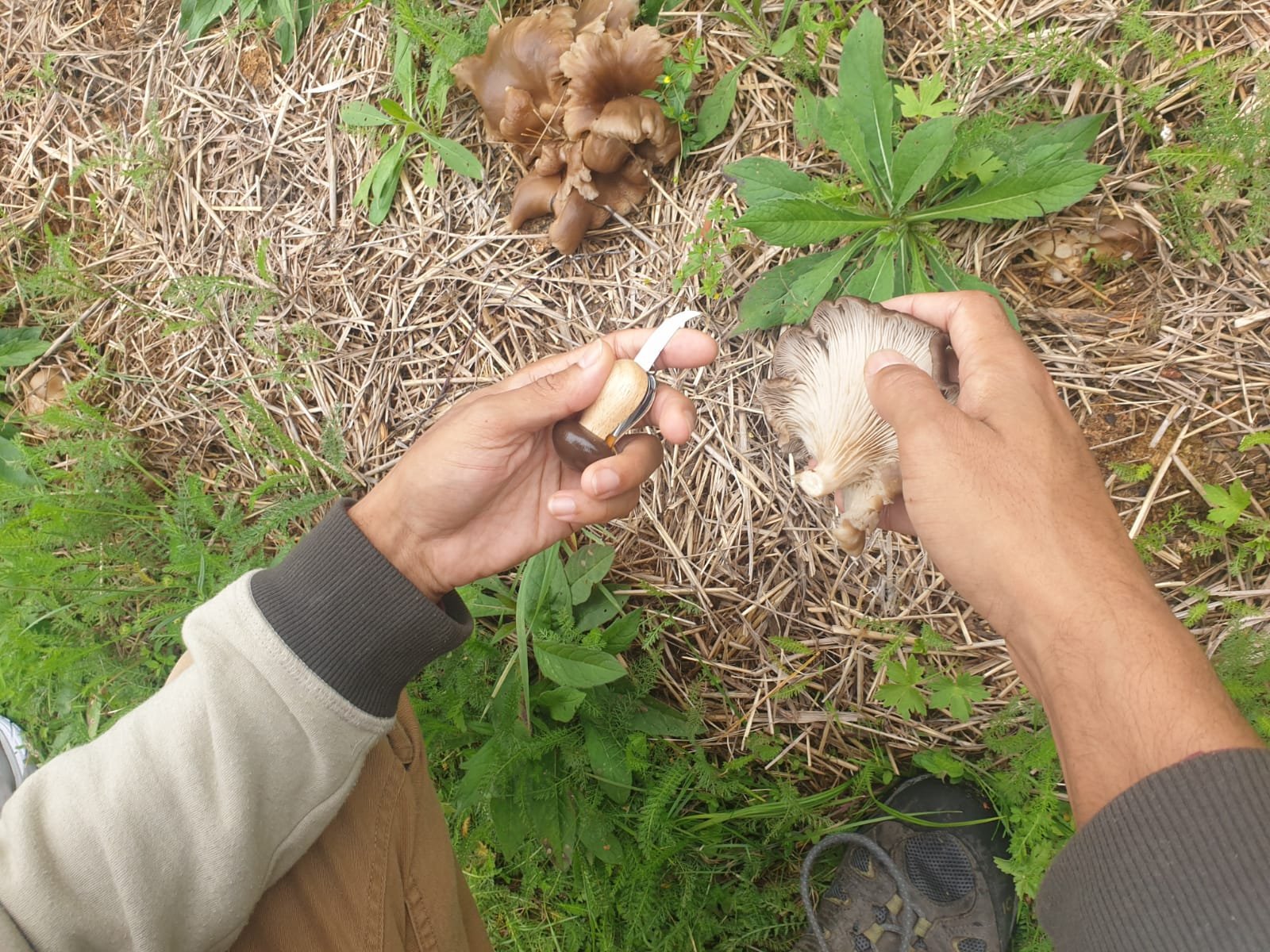
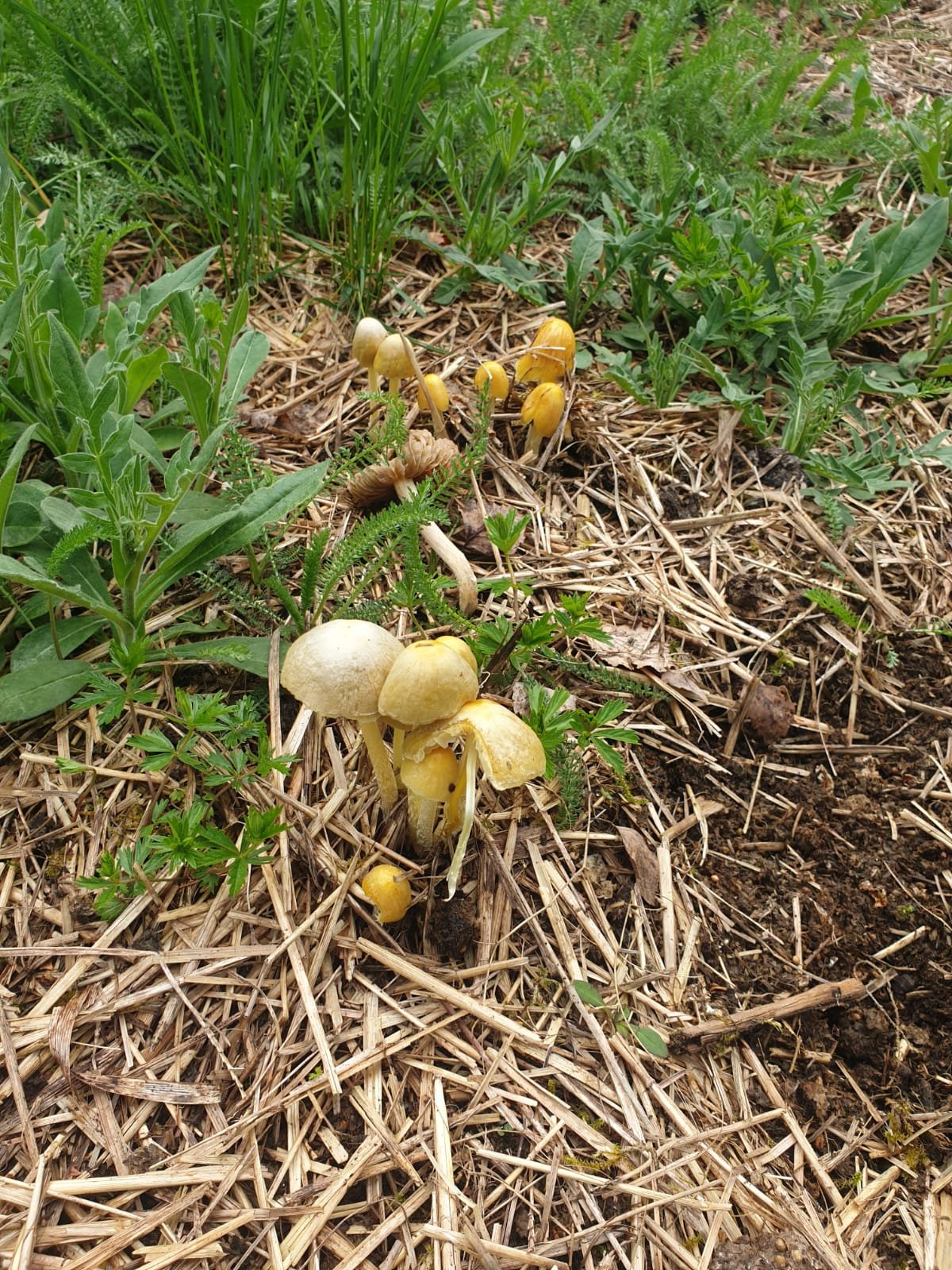
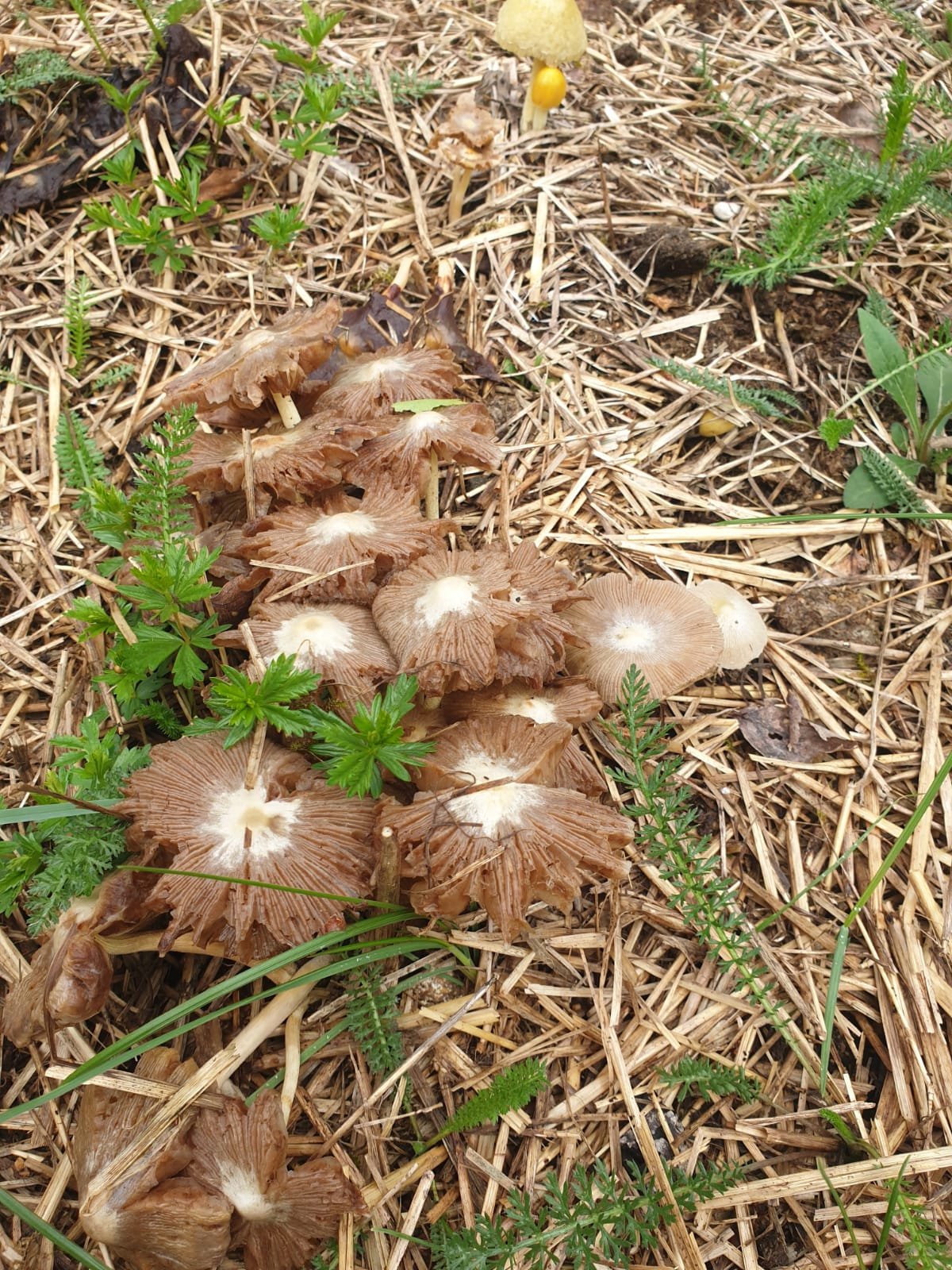

The land artwork was made during 22 days at TUO TUO’s land, which was once a sports field for the students of the Pynnolä village school in Joutsa, Finland. The work is almost entirely made of local natural materials such as fallen birch and willow twigs, branches and logs, and washed up reed, all found around the nearby forest and lakeside surroundings. The installation also gives a new life to discarded materials, such as damaged straw and old wood chips from local farmers, broken fishing nets from neighbour Martti, as well as old scobys from kombucha brewers Ohakune and Roihuvuoren Virvoitusjuoma. Furthermore, the installation hosts living materials such as post-harvest oyster mushroom columns and growing plant seedlings provided by Helsieni, as well as logs inoculated with shiitake and turkey tail mushrooms provided by Kääpä Biotech.
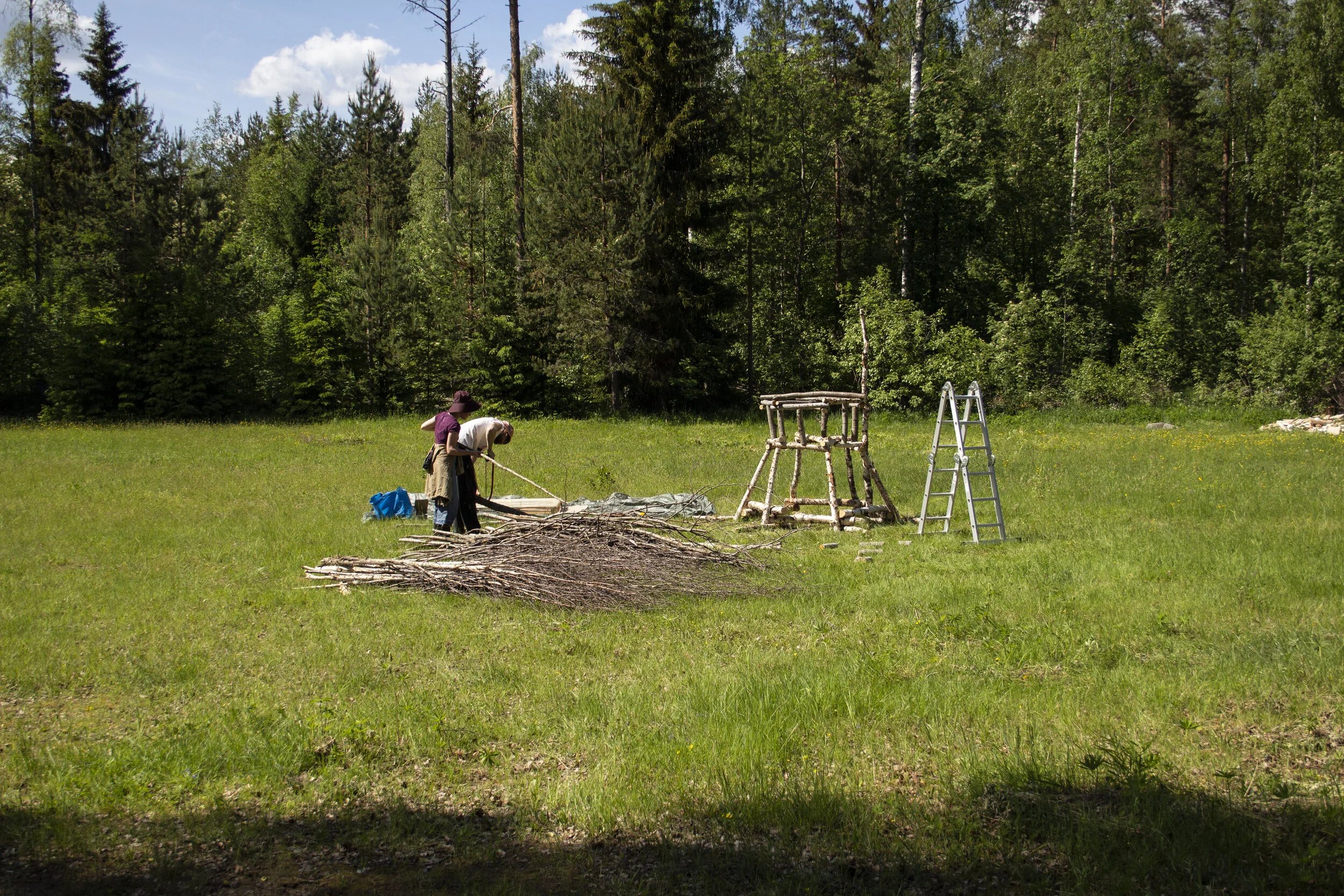
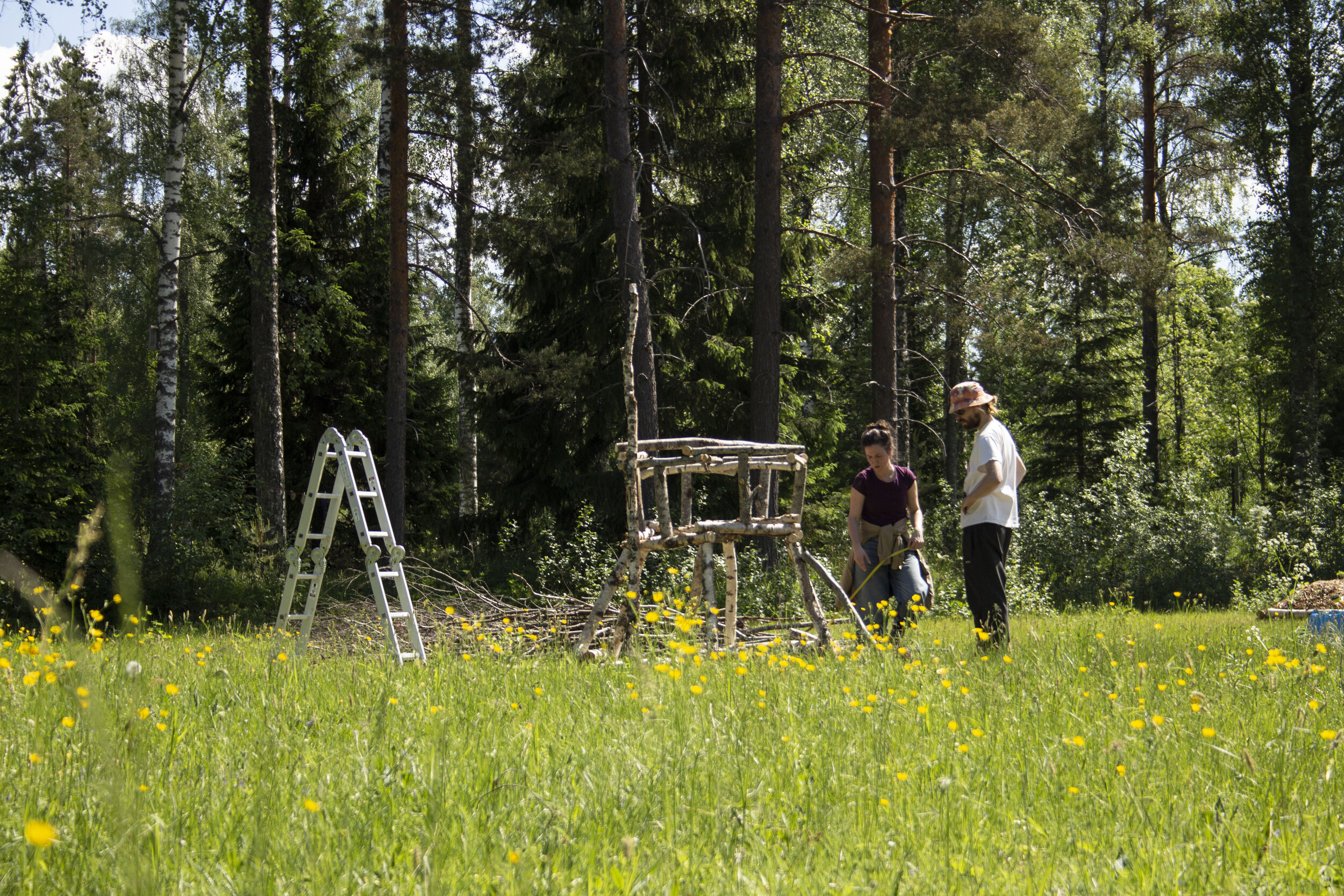
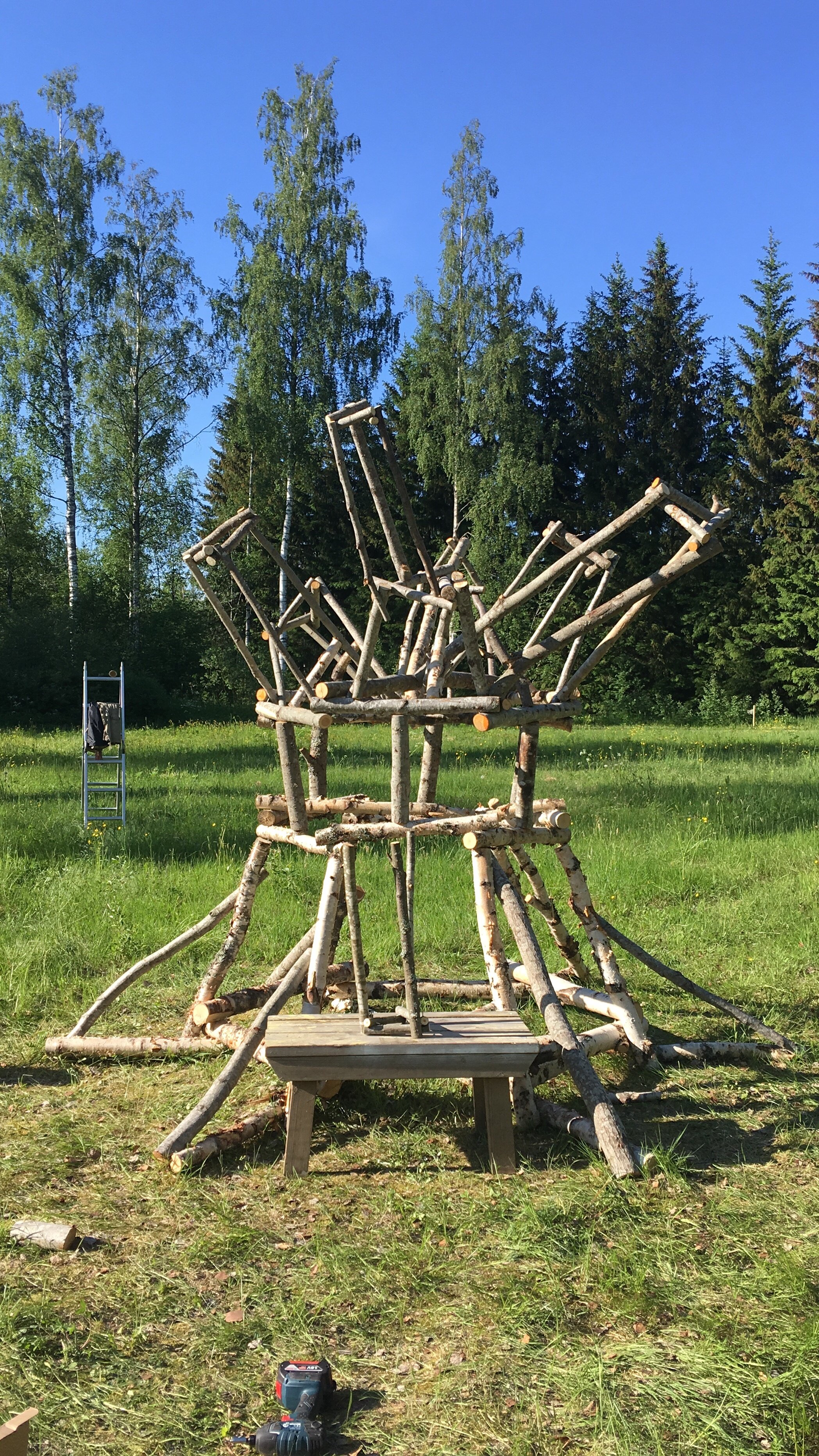
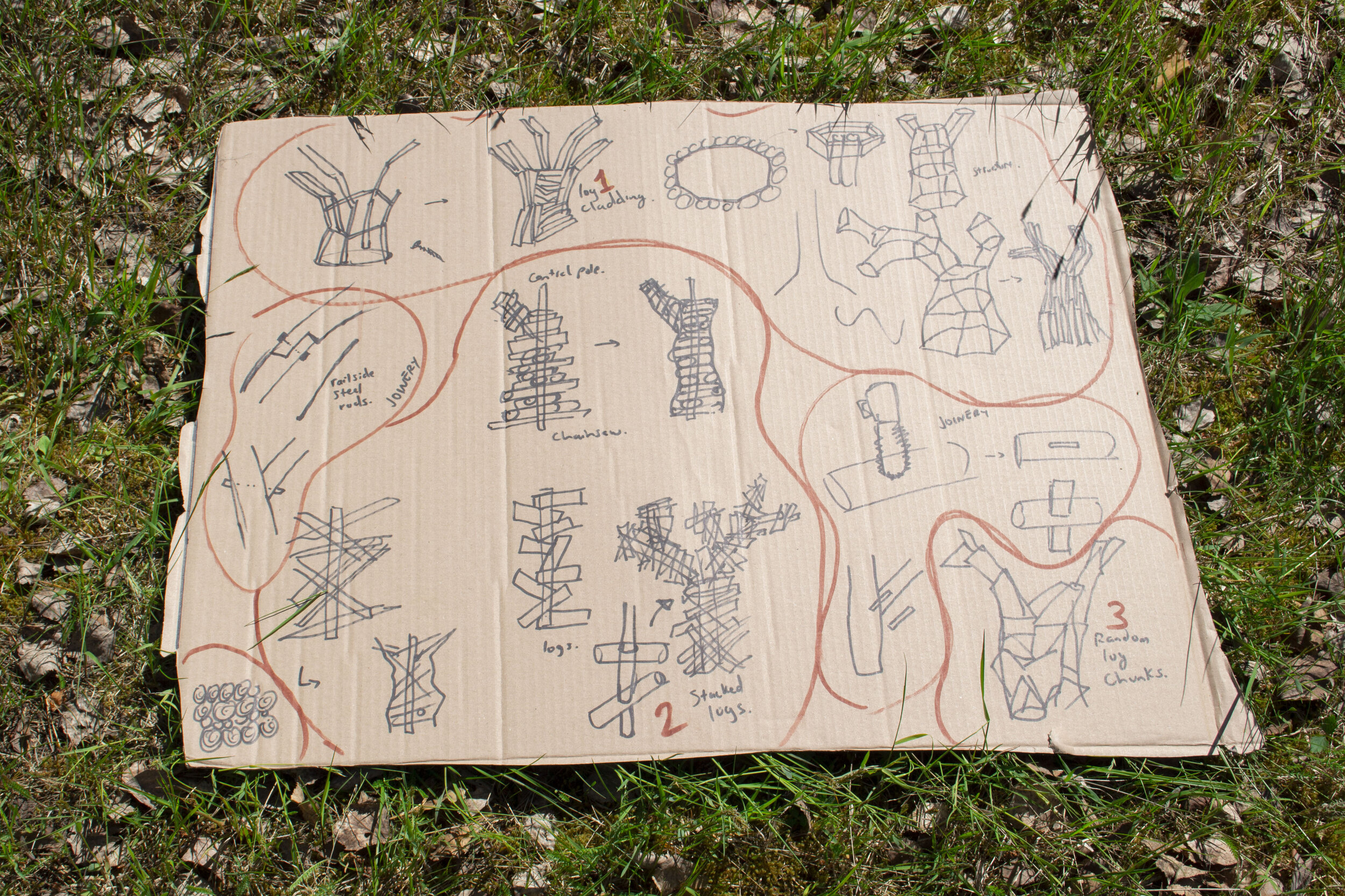
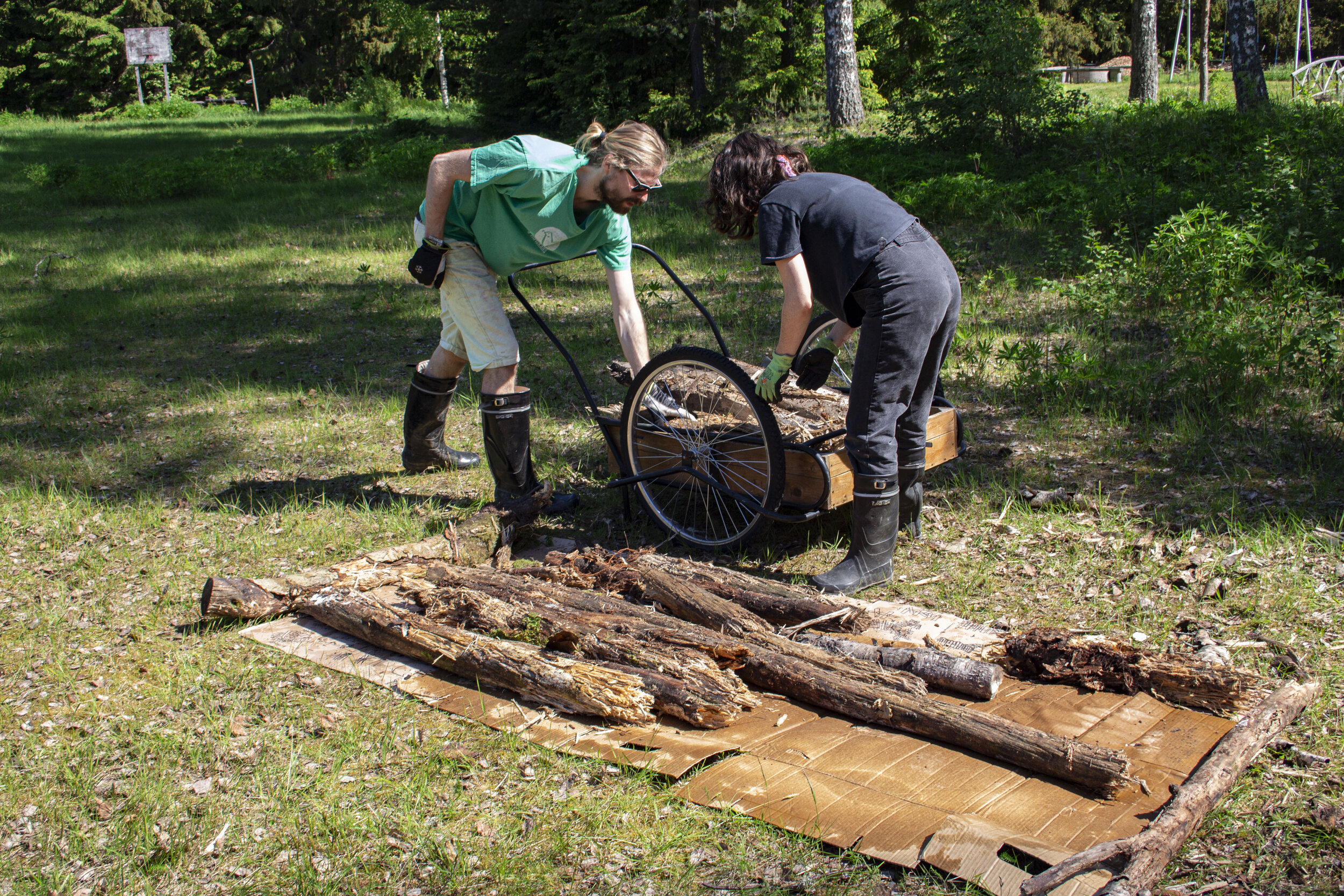
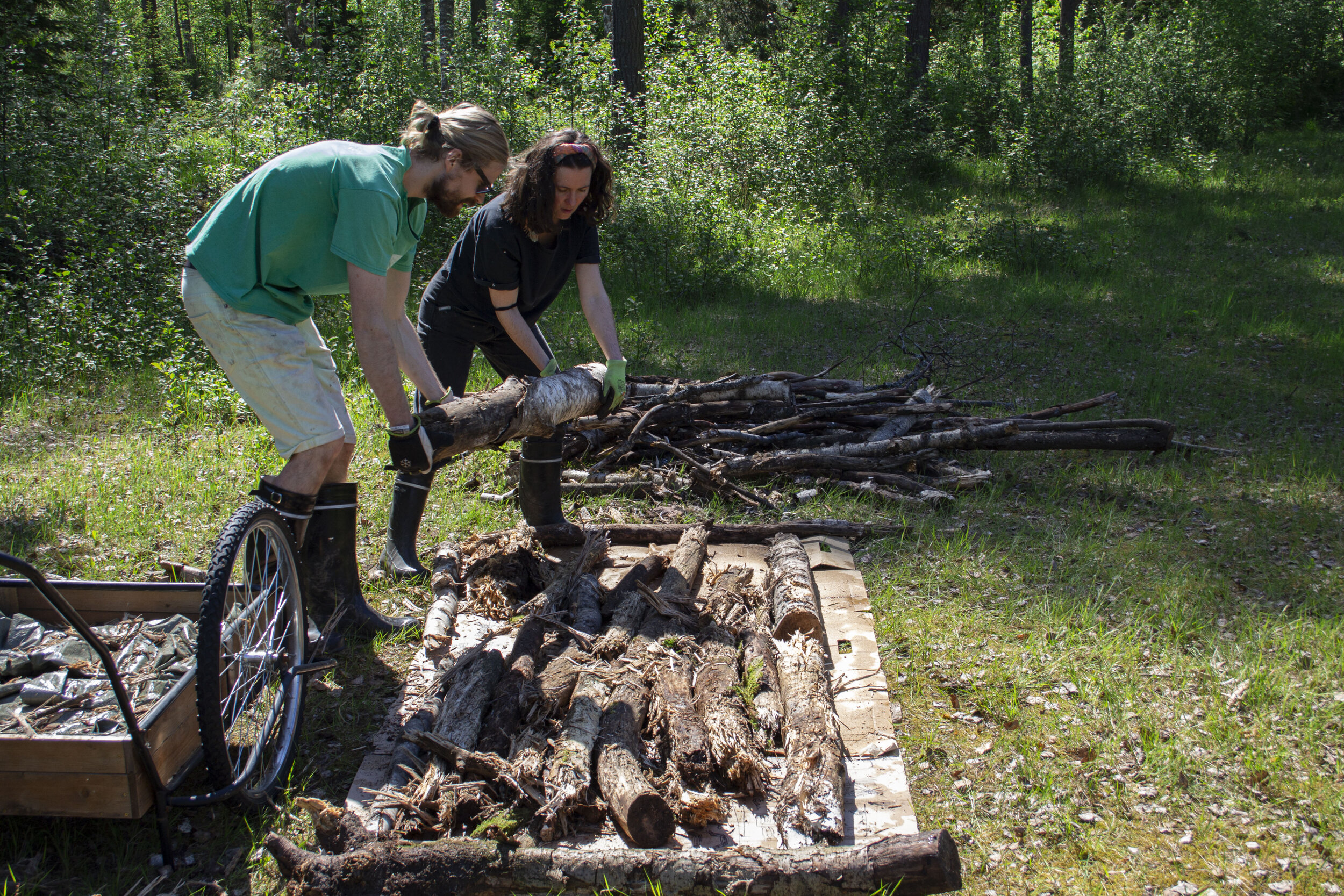
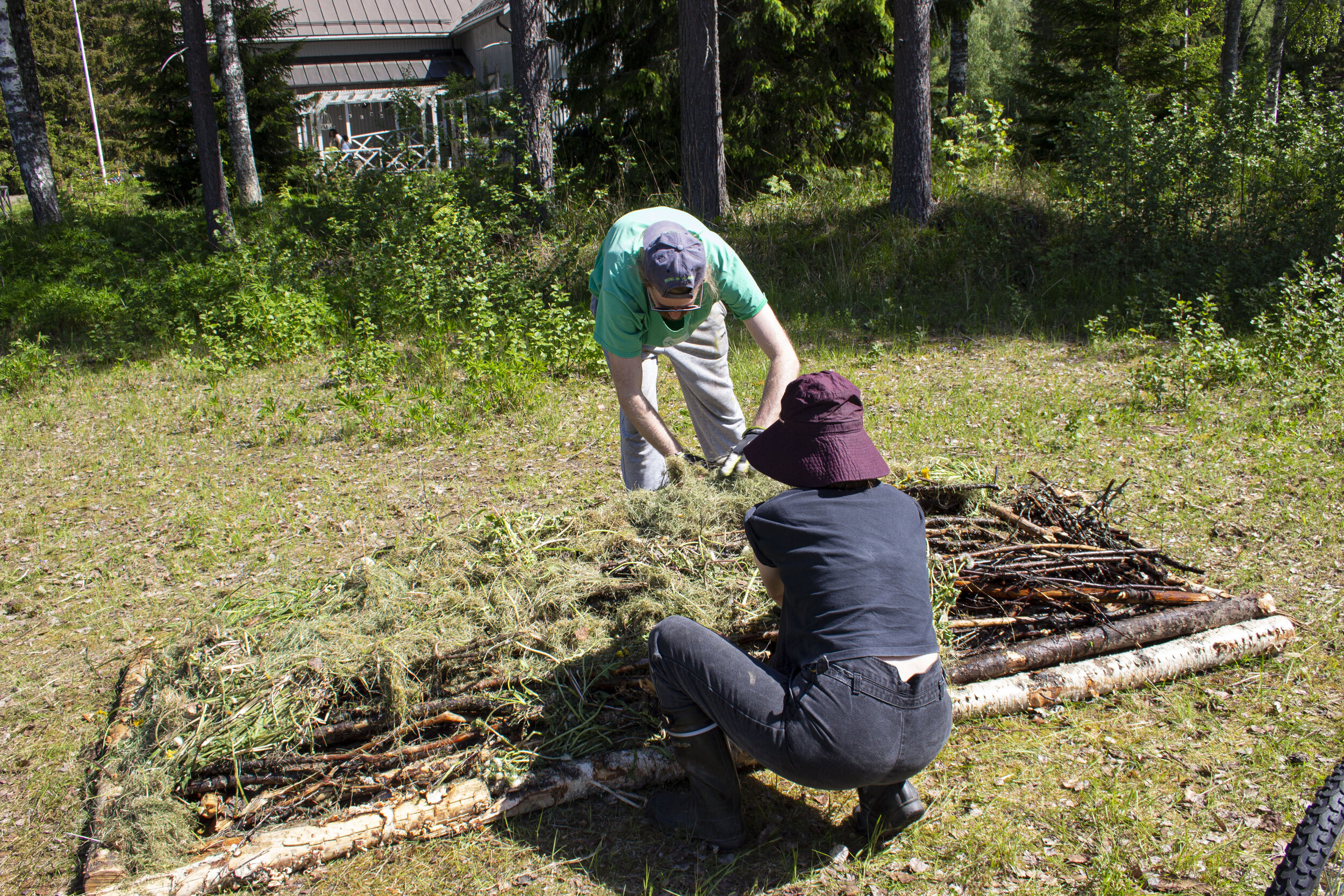


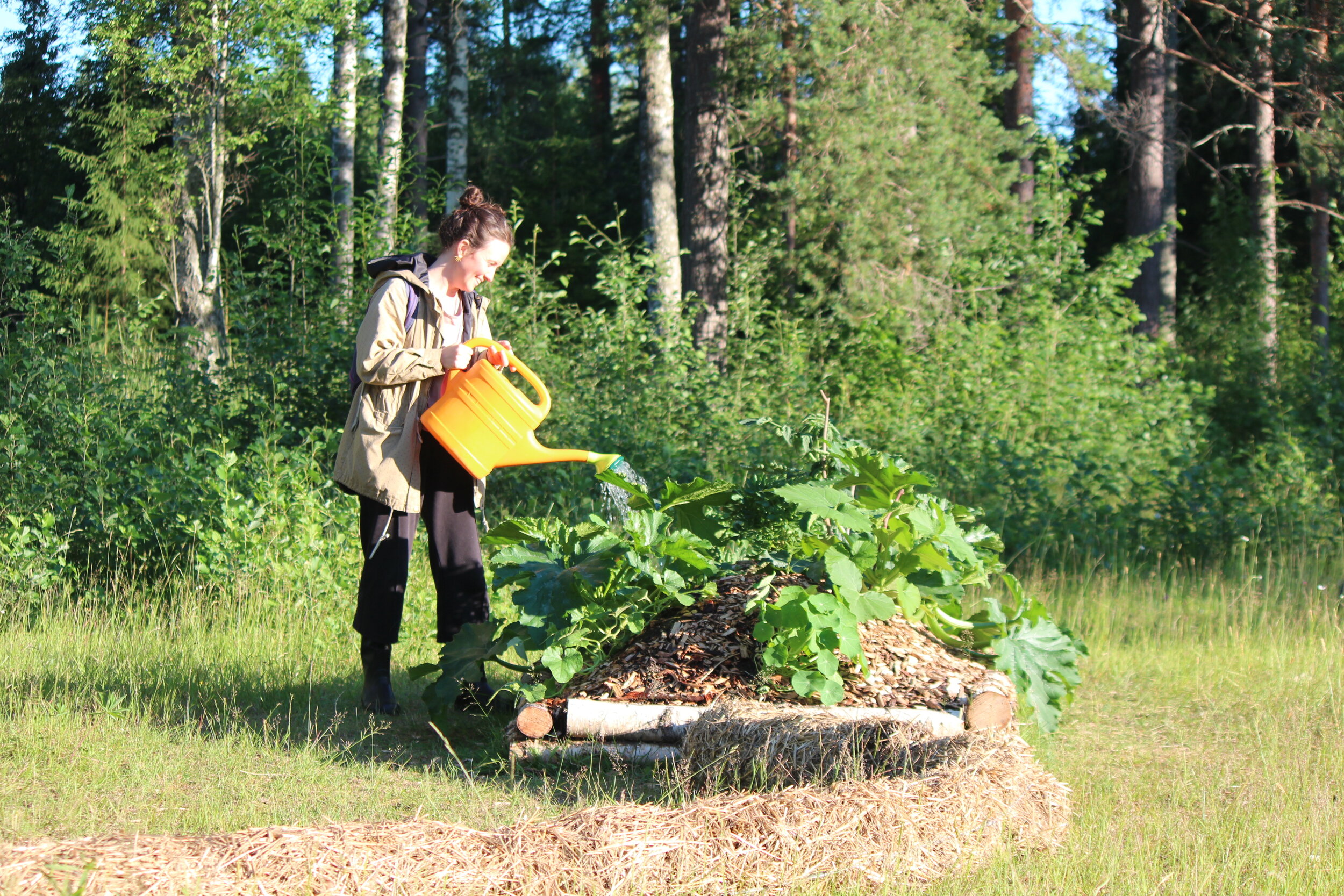
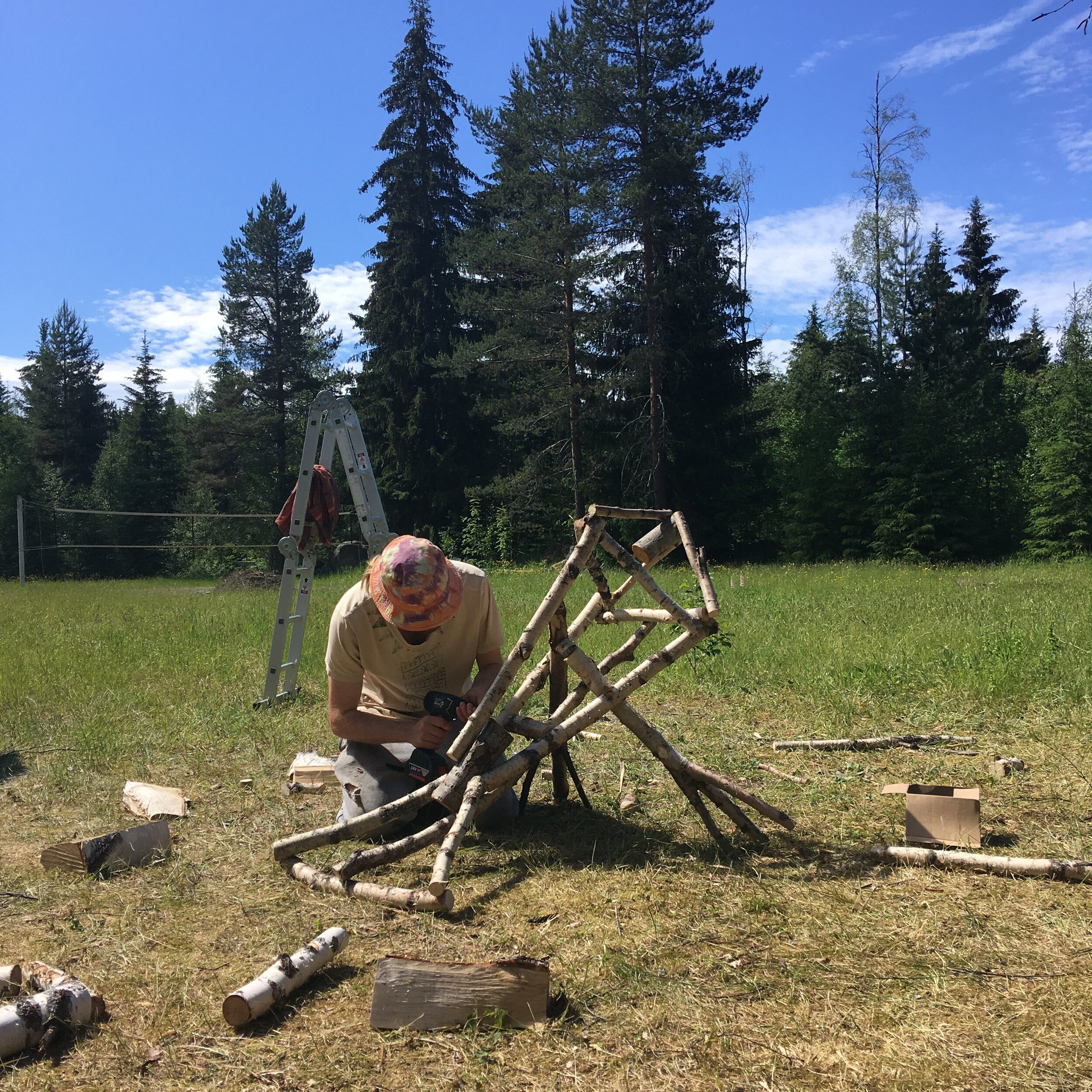
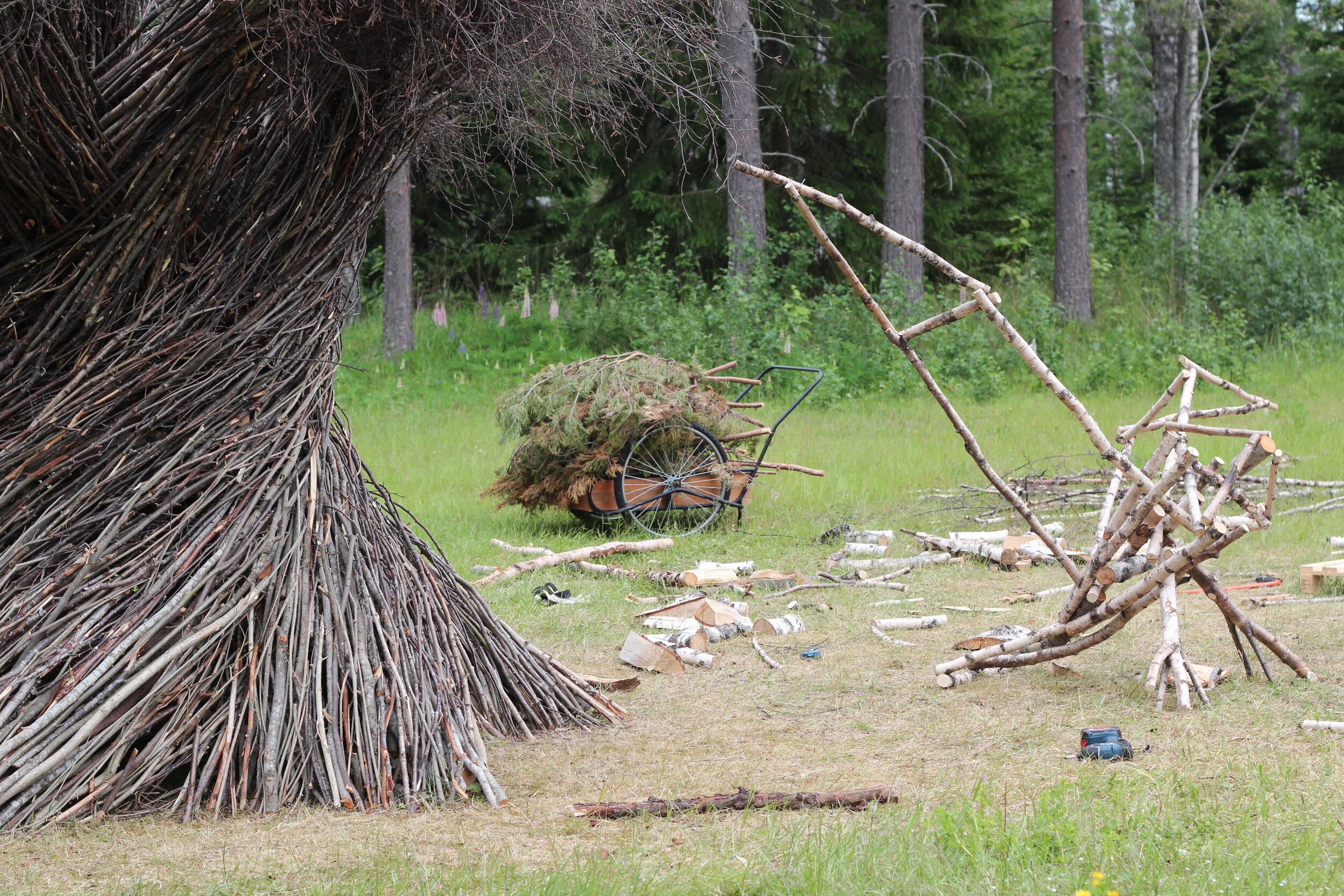
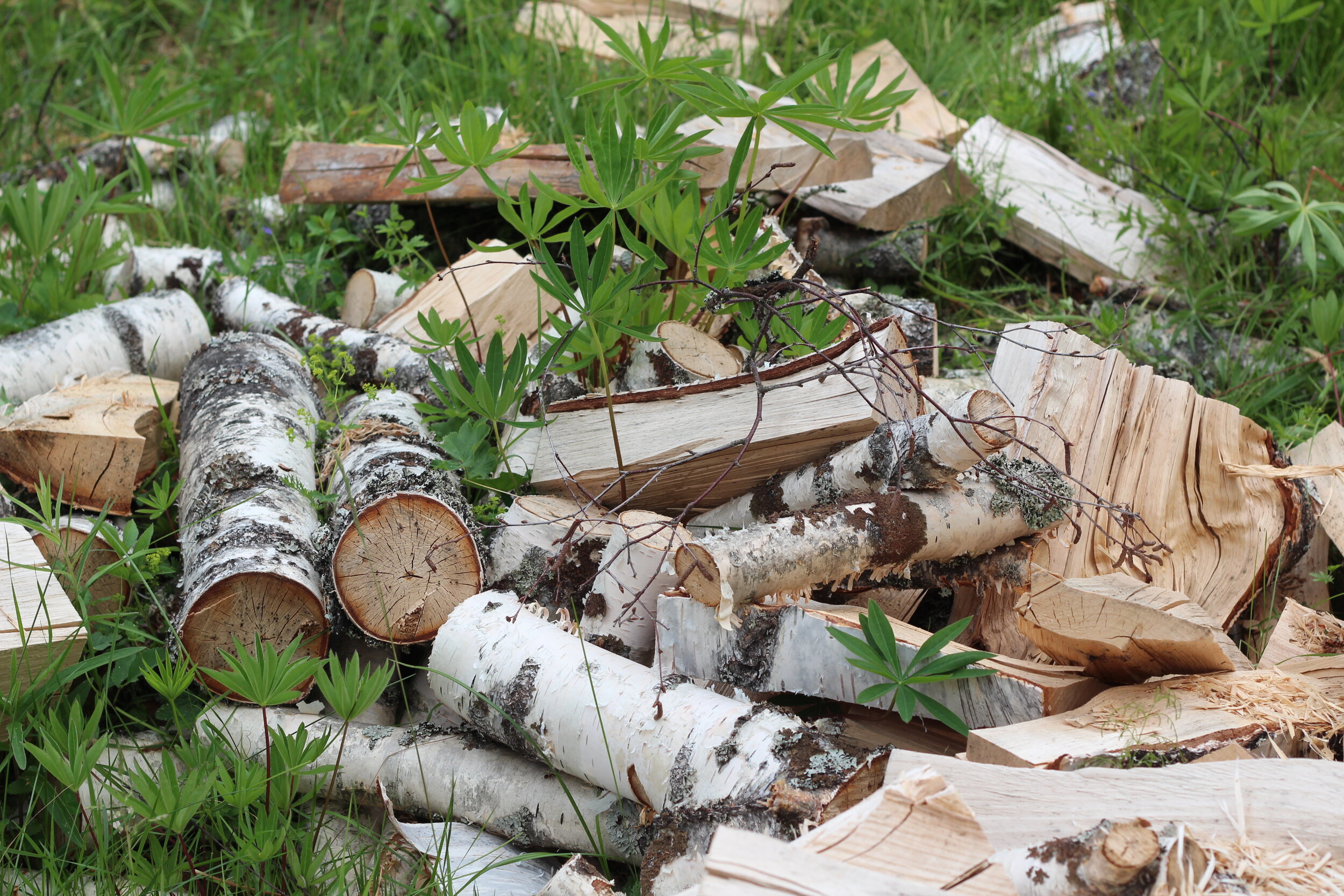
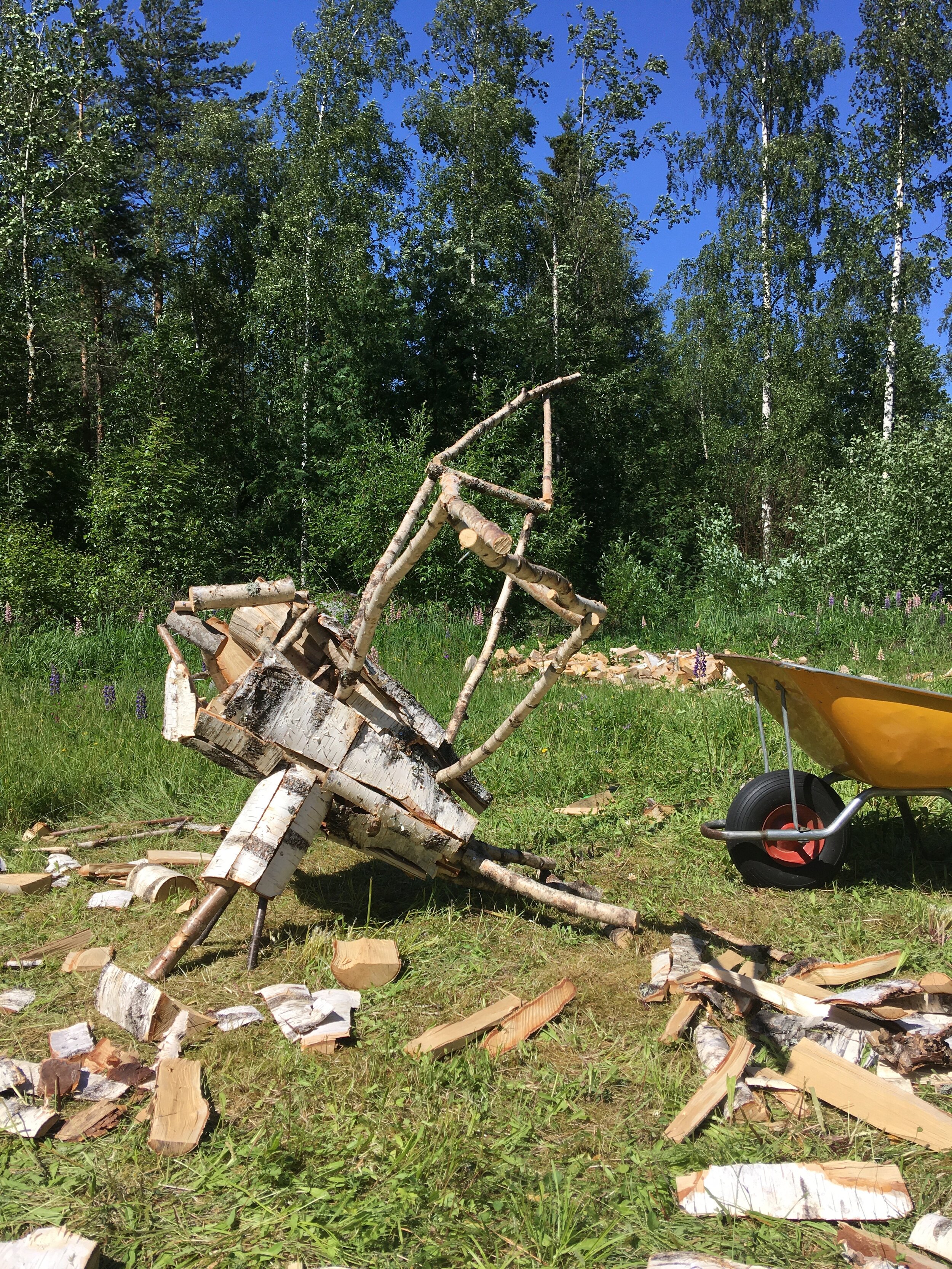
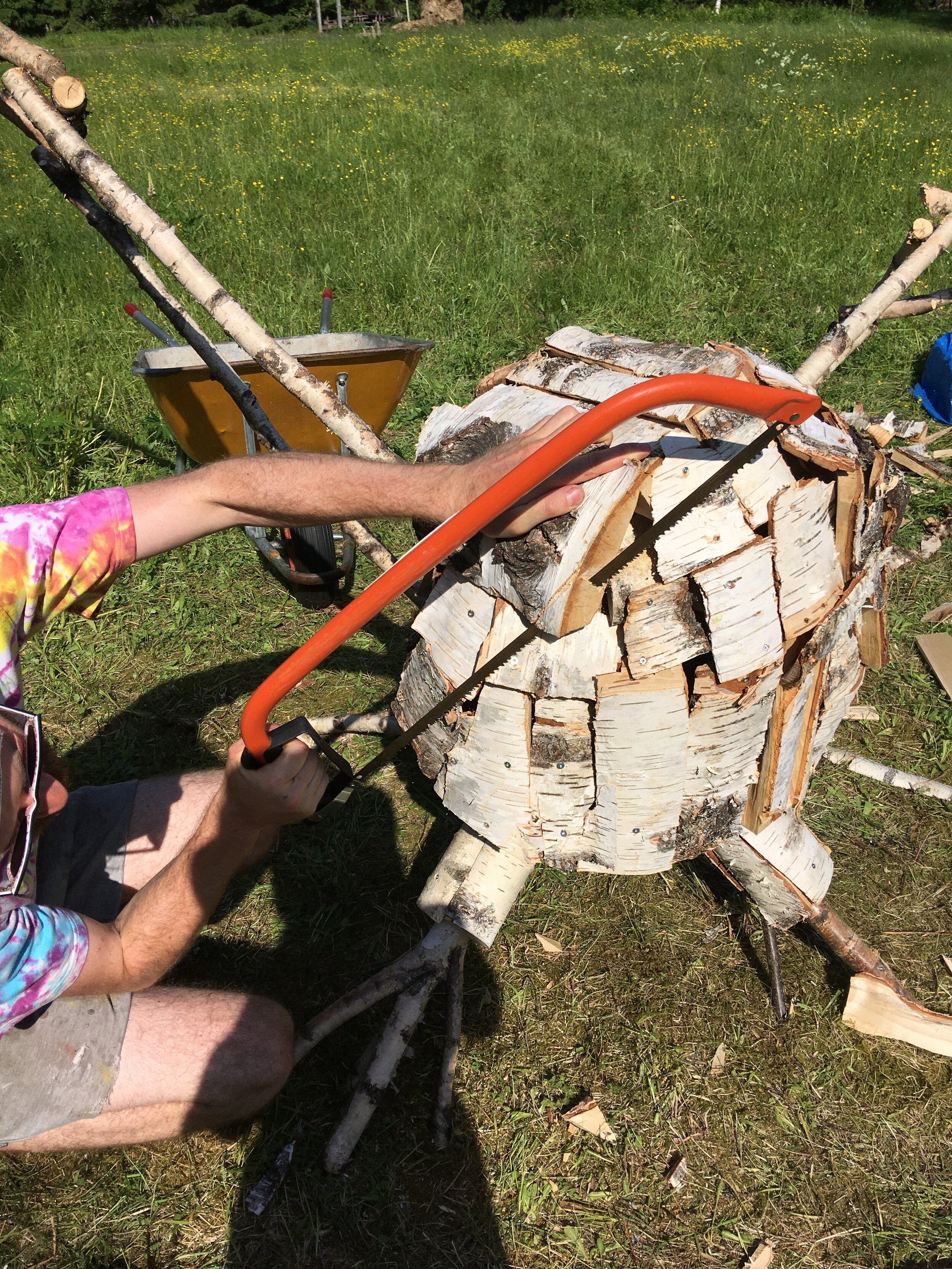
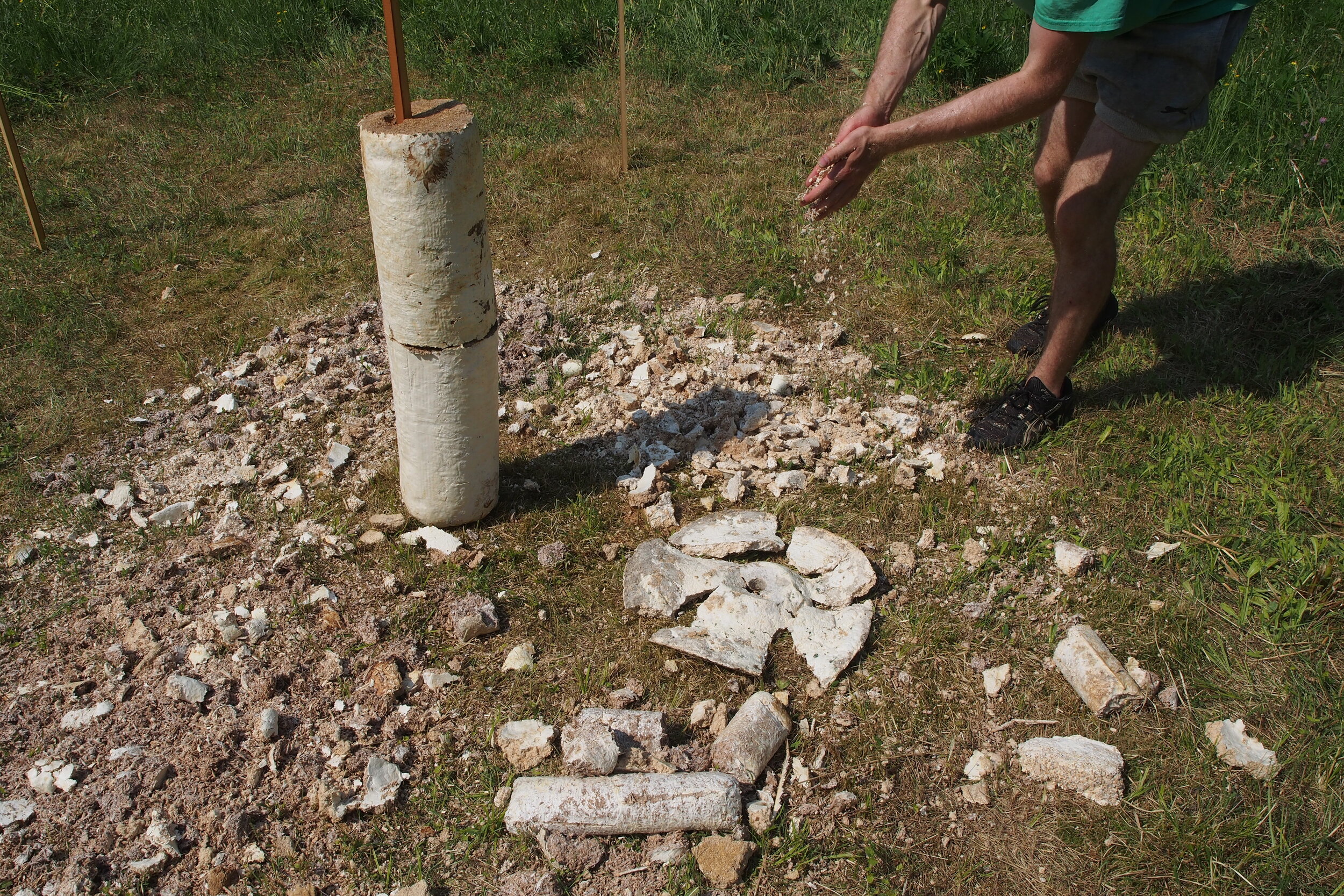
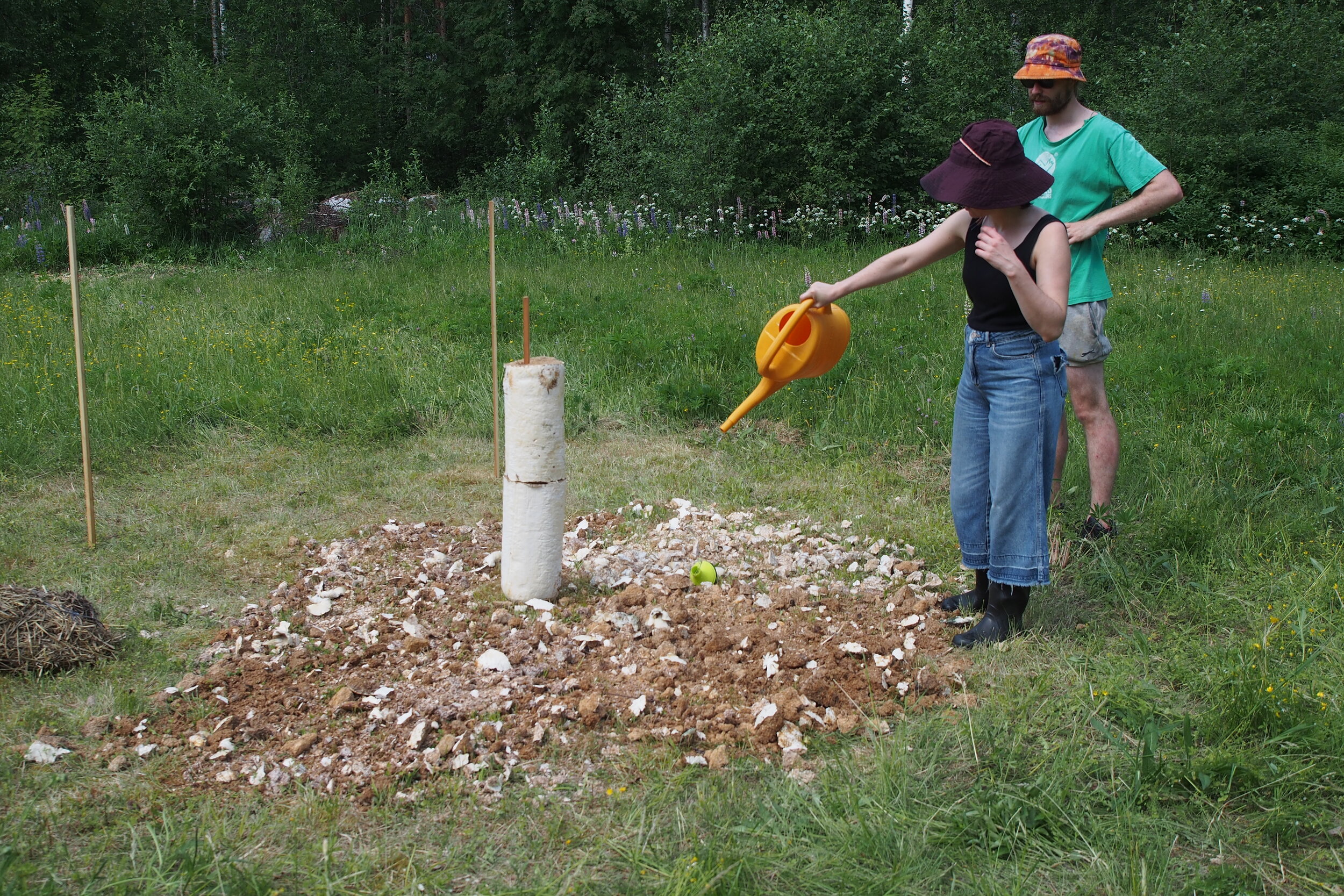

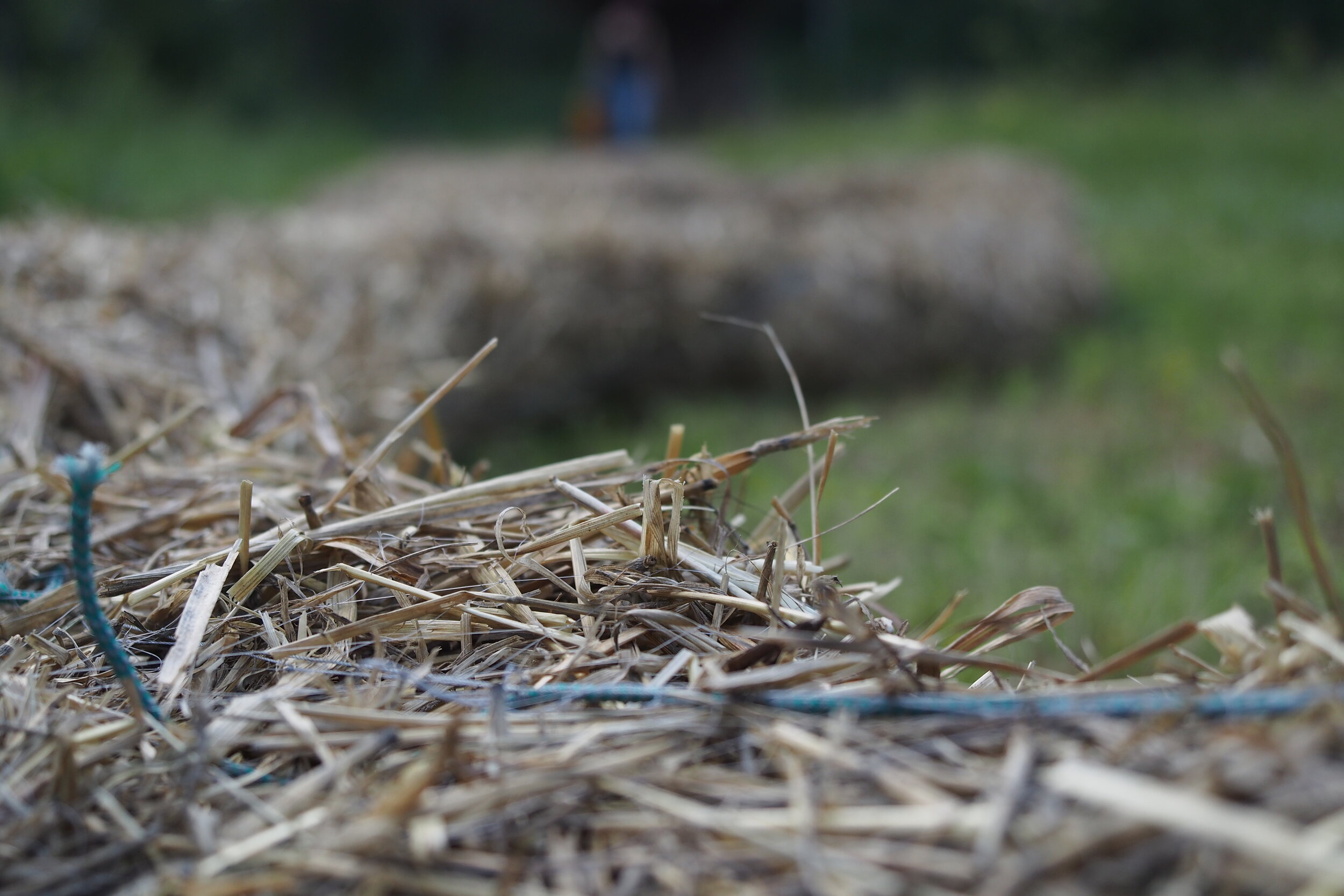


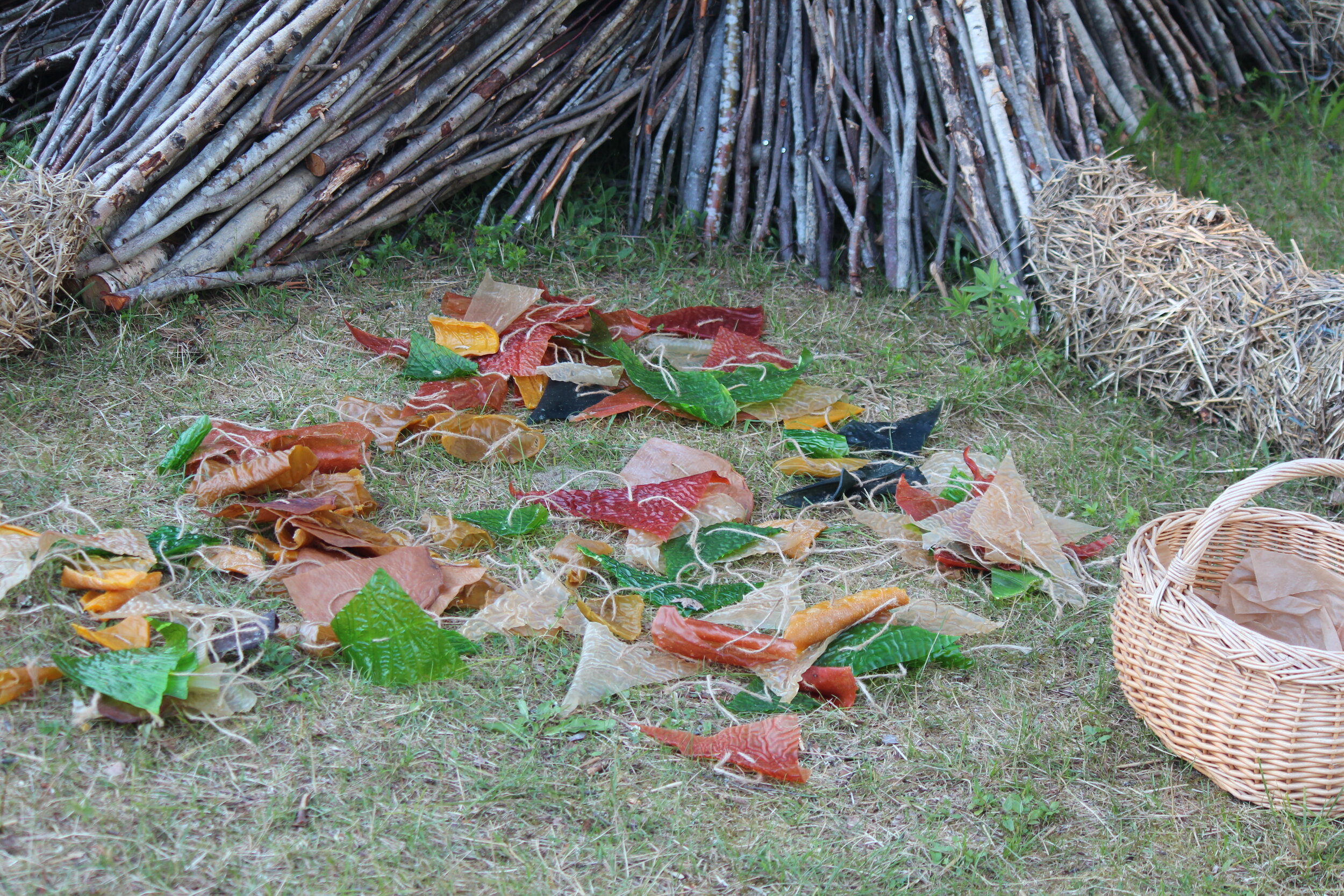
The exhibition opened on Midsummer Eve on 25.6.2021 and was open to the public until the end of August 2021. After the exhibition season, elements of the installation were disassembled and returned to the forest. Meanwhile, fungi and bacteria will digest and decompose the remaining parts helping to drive the carbon cycle within the ecosystem.
A huge thank you to everyone who was a part of this project!
Concept & Production: Caracara Collective & Tania Malréchauffé
Hosted by: TUO TUO’s Kulttuuri Tila & Residency
Supported by: Arts Promotion Centre Finland

